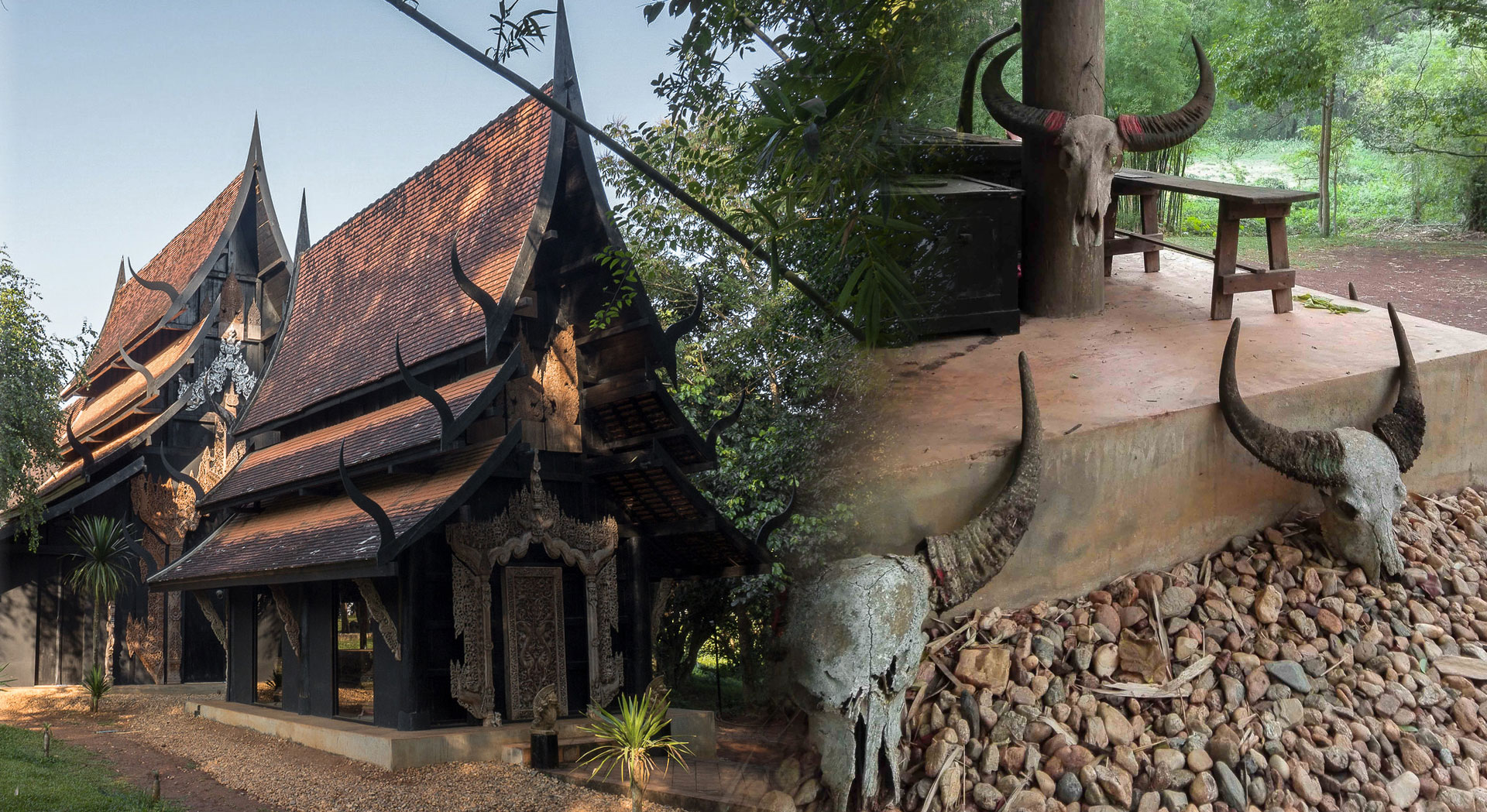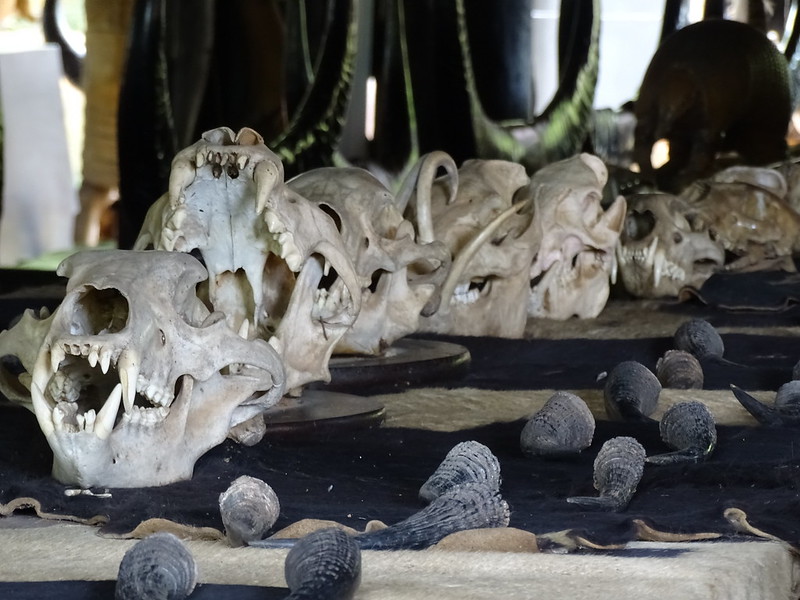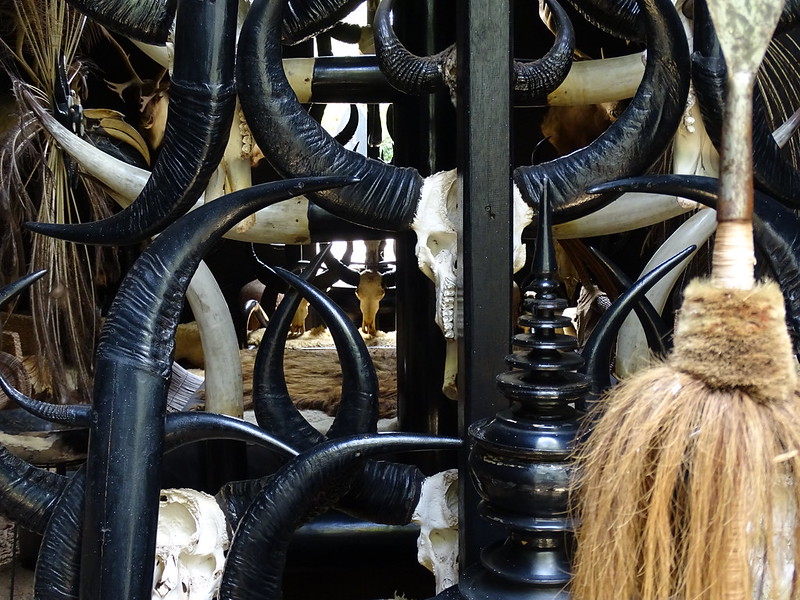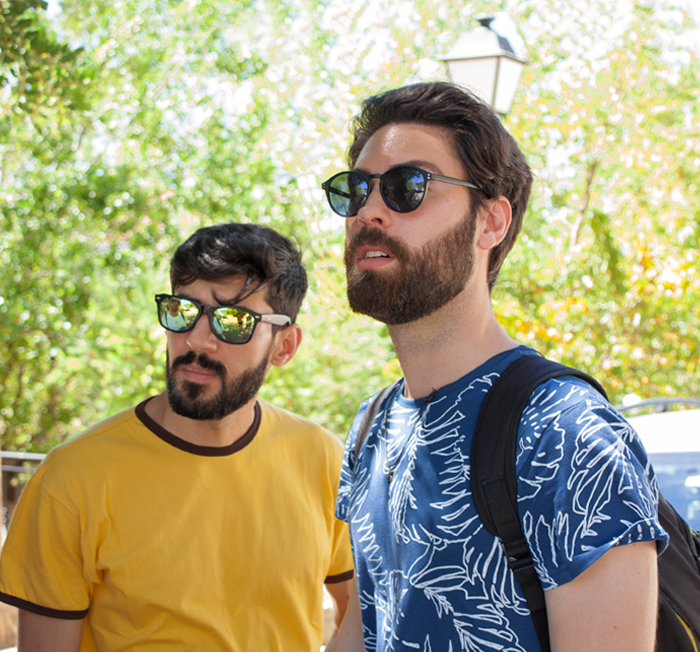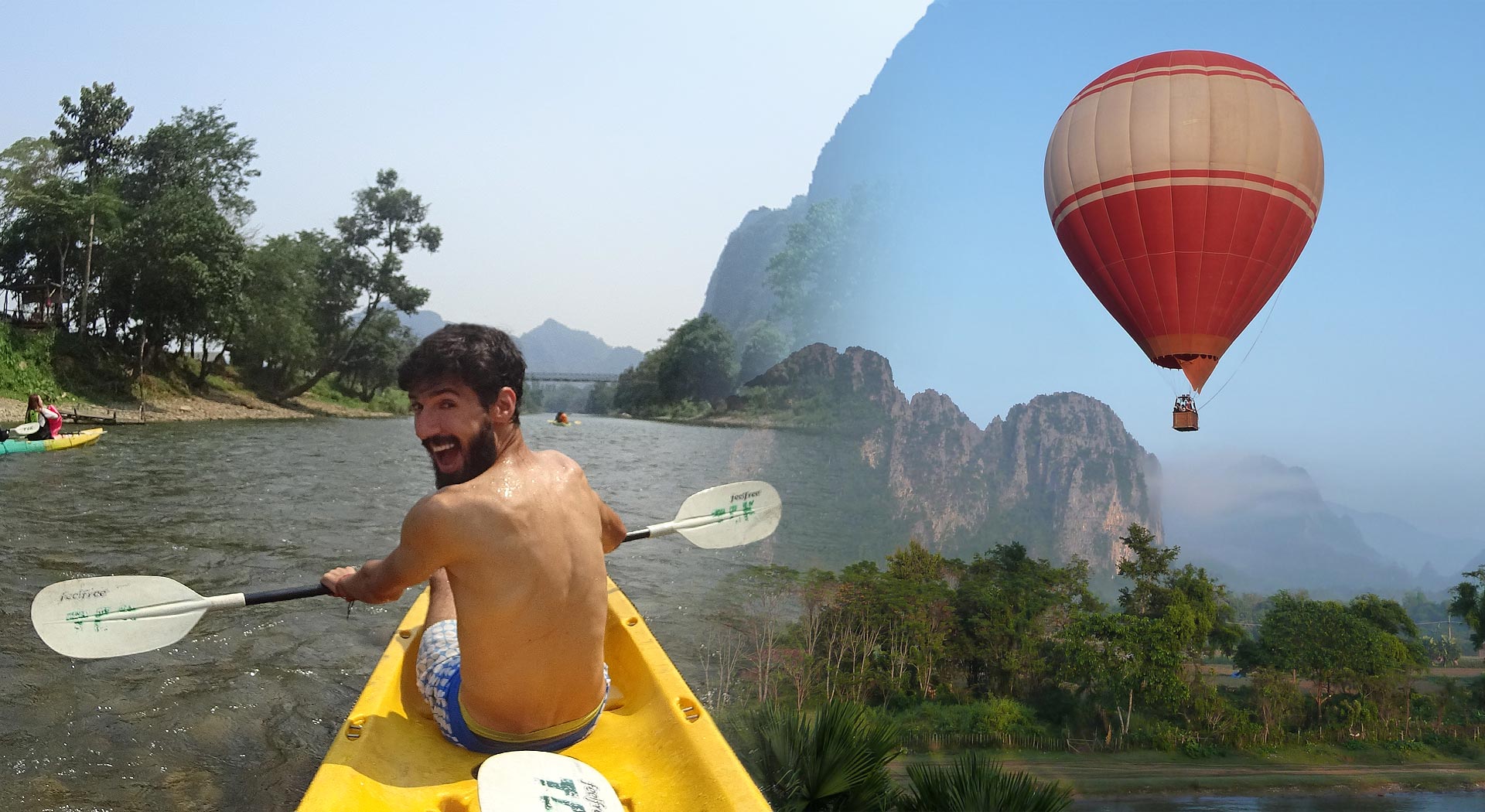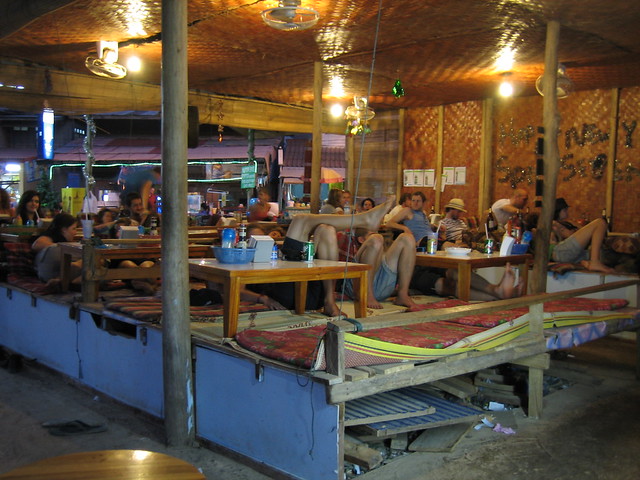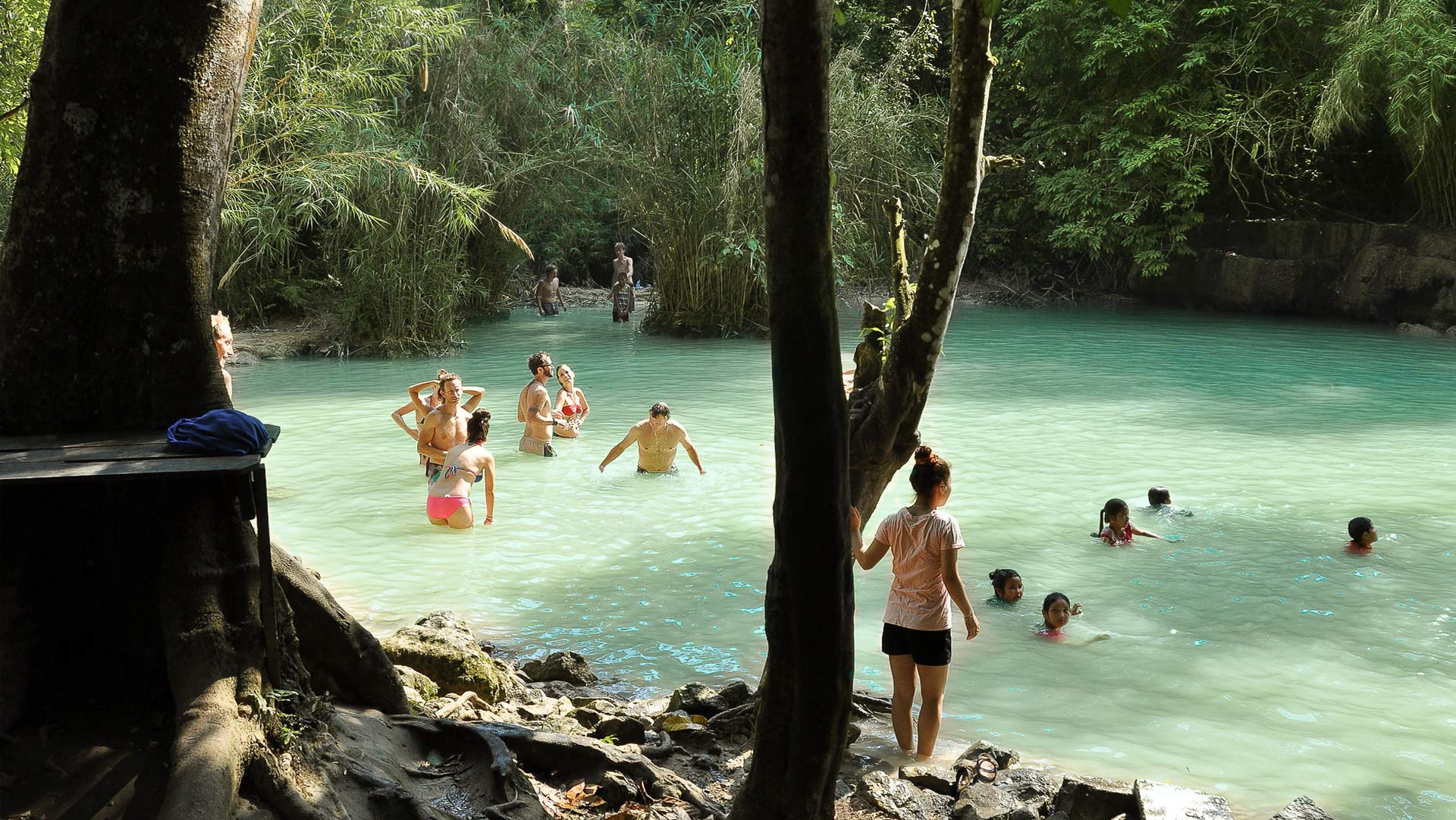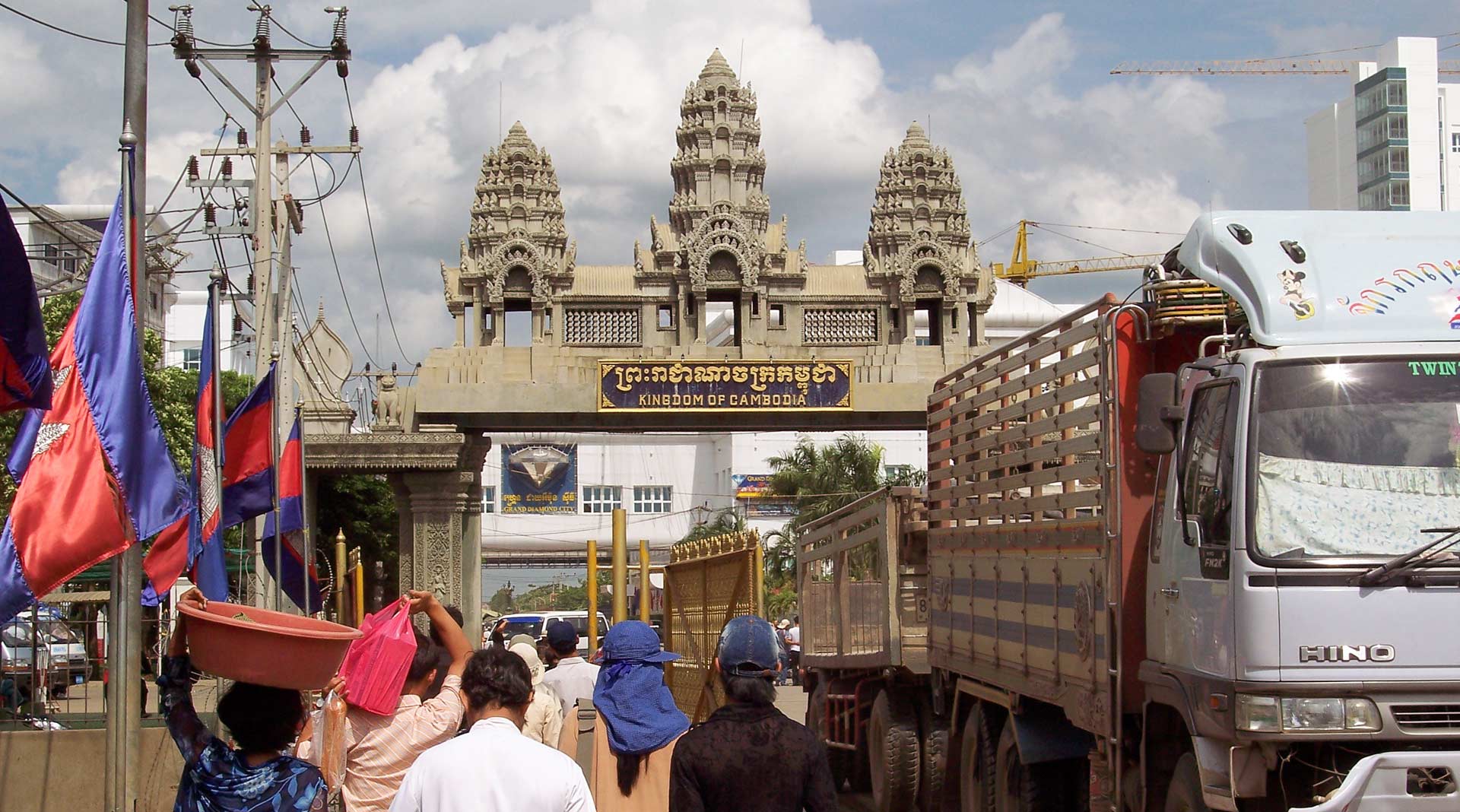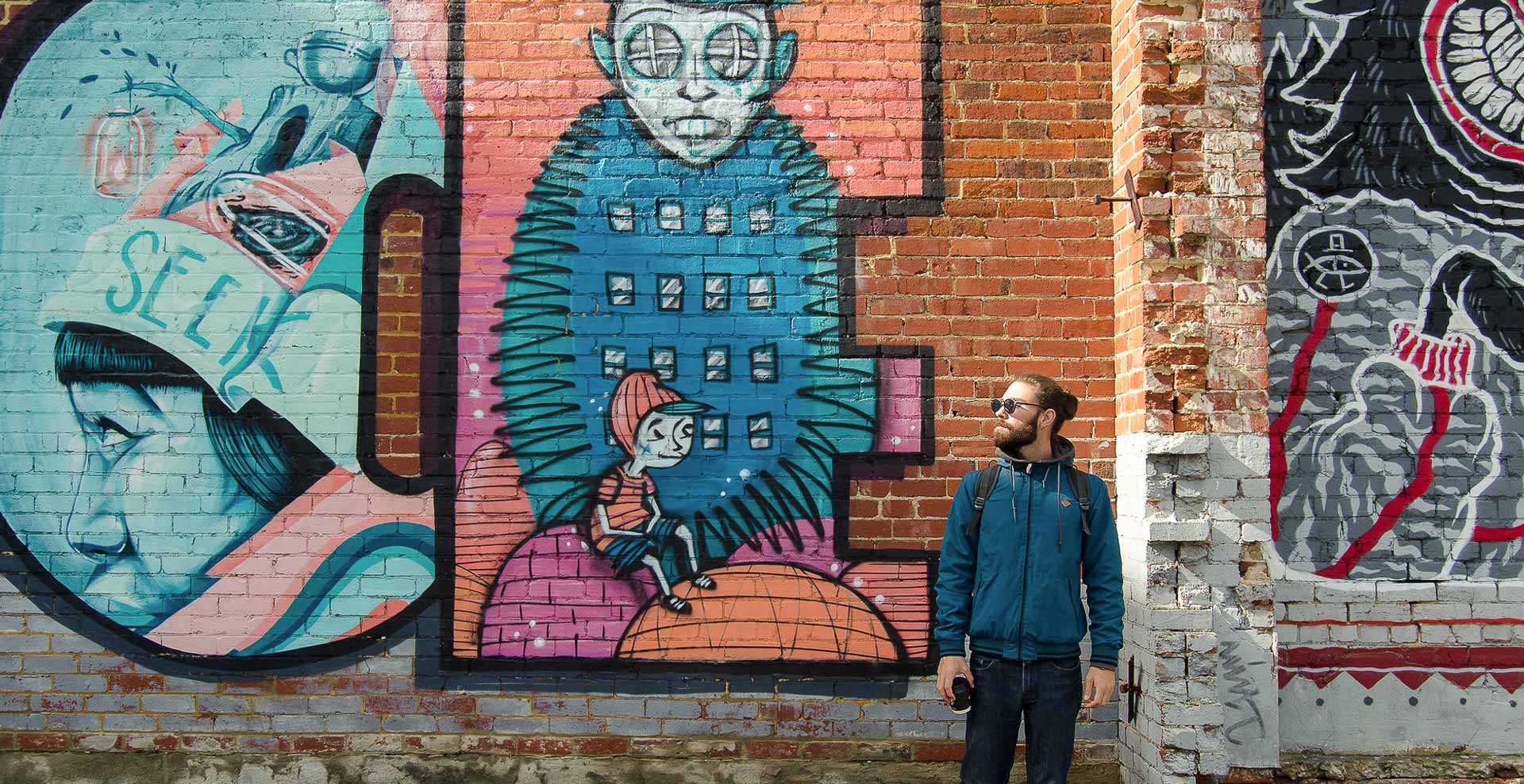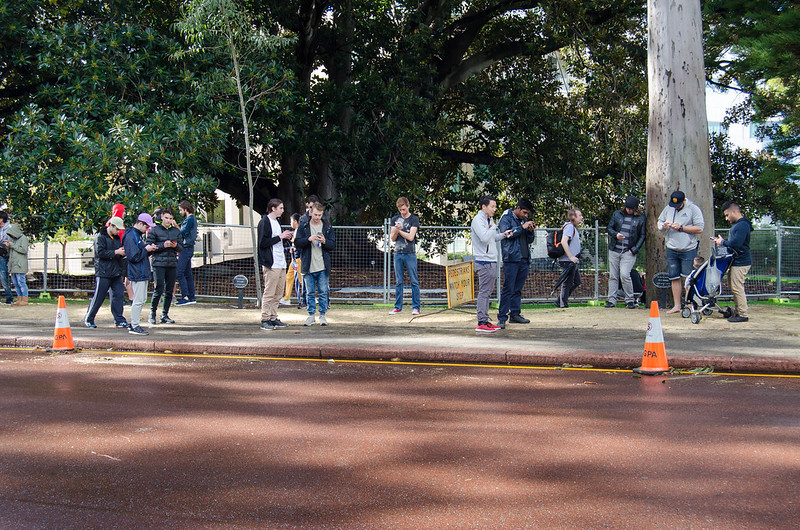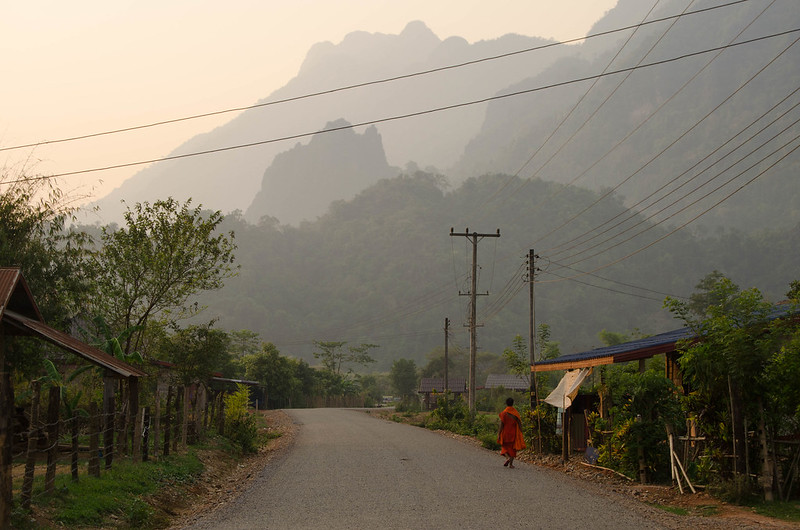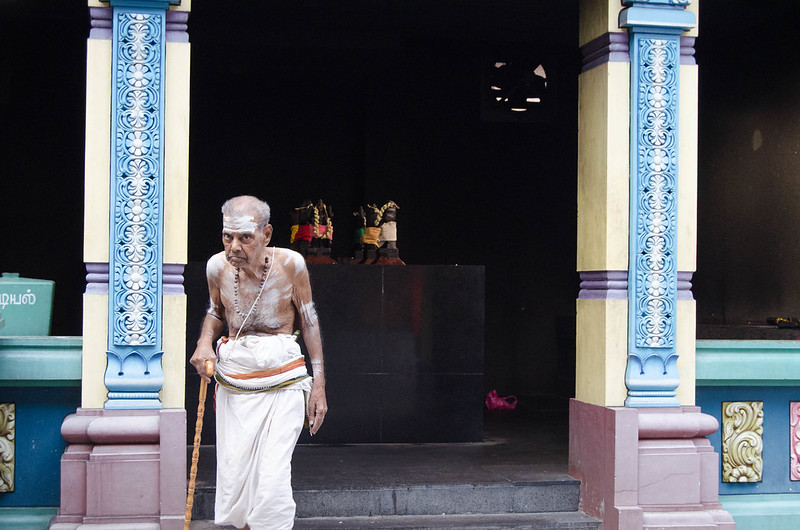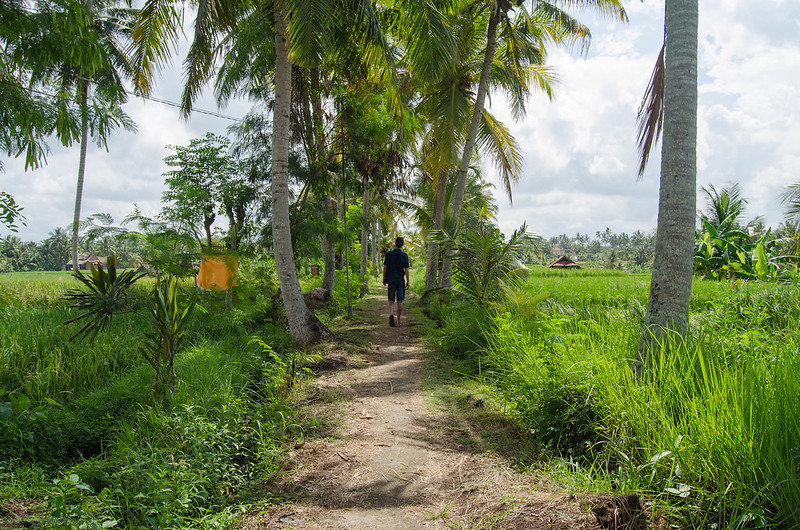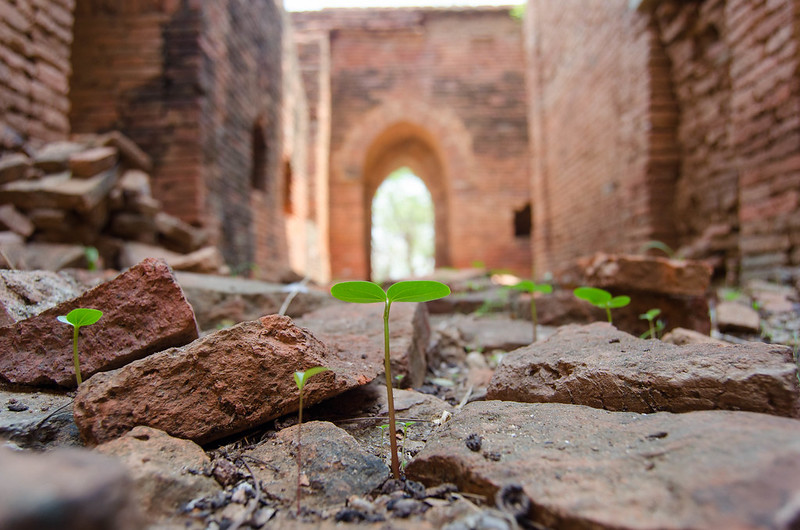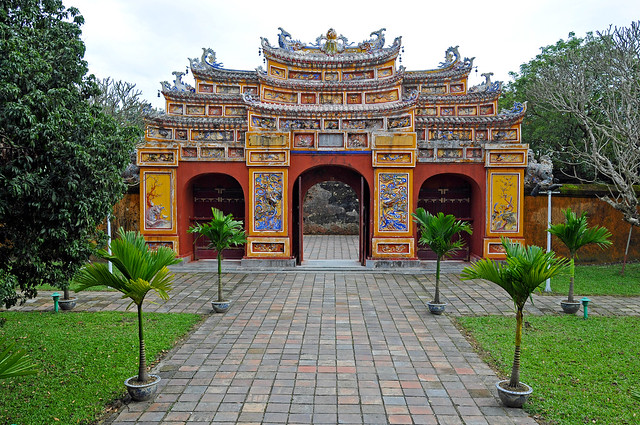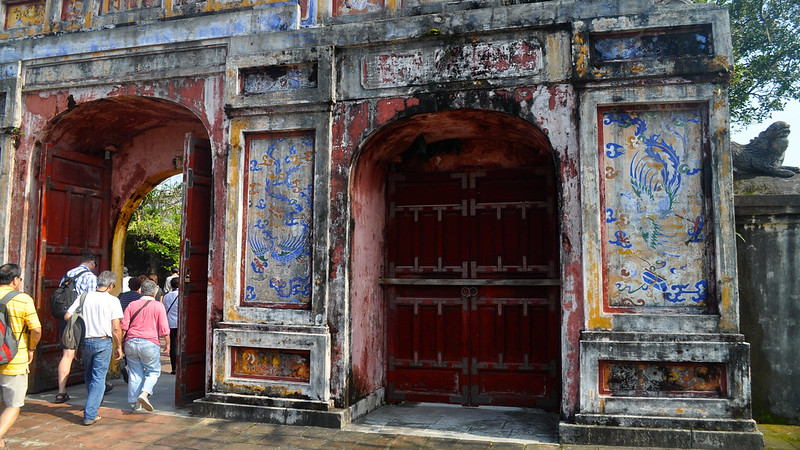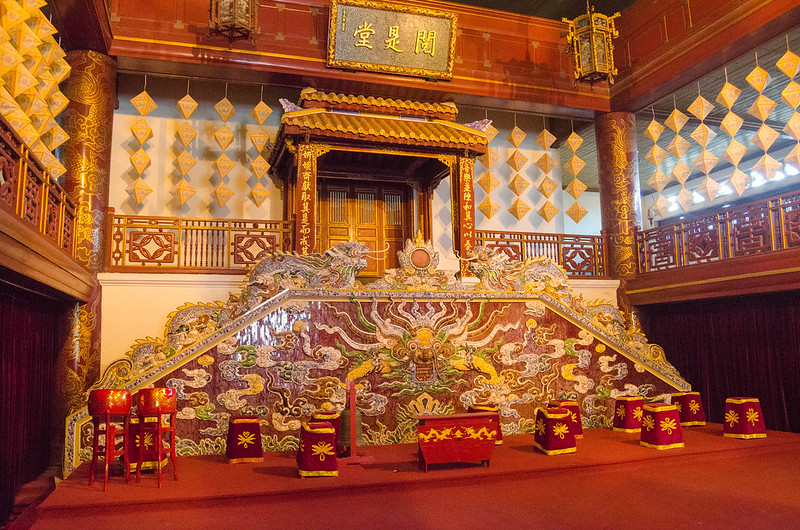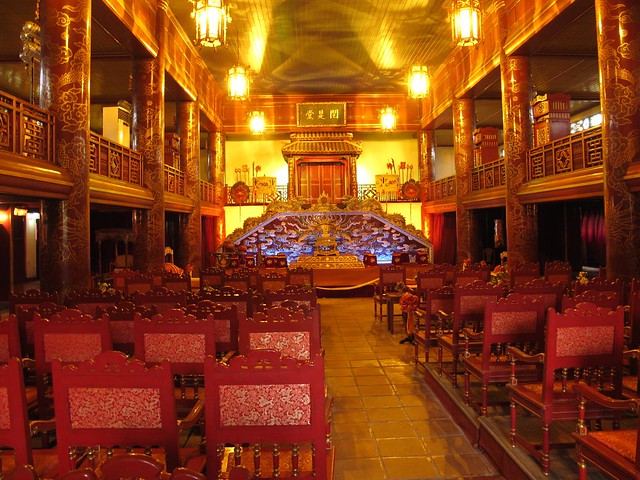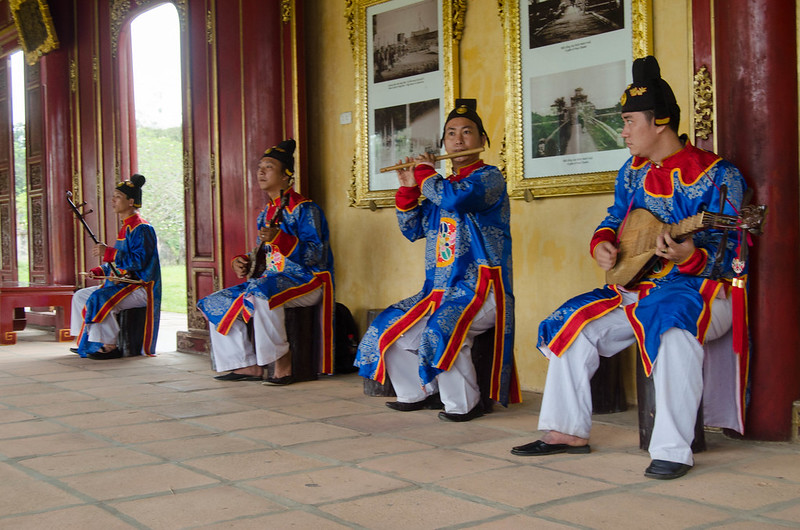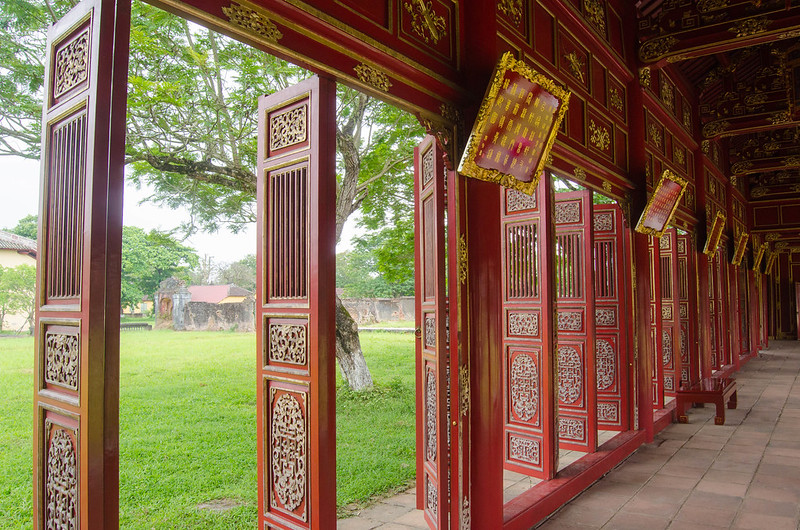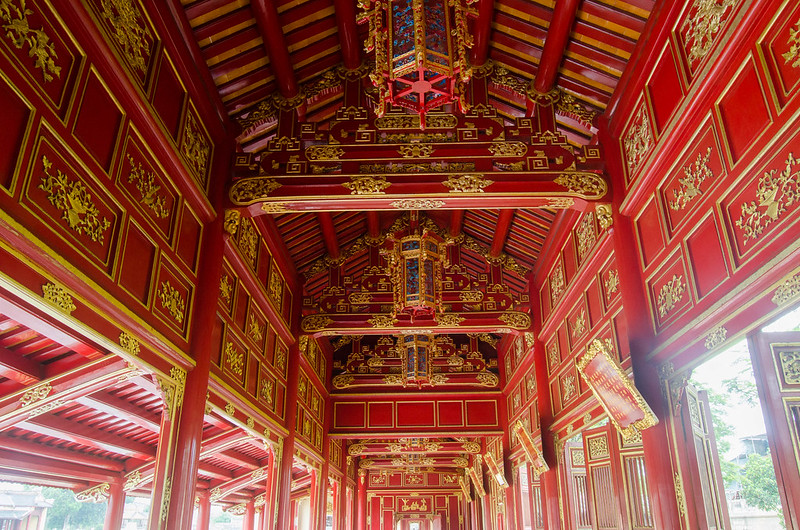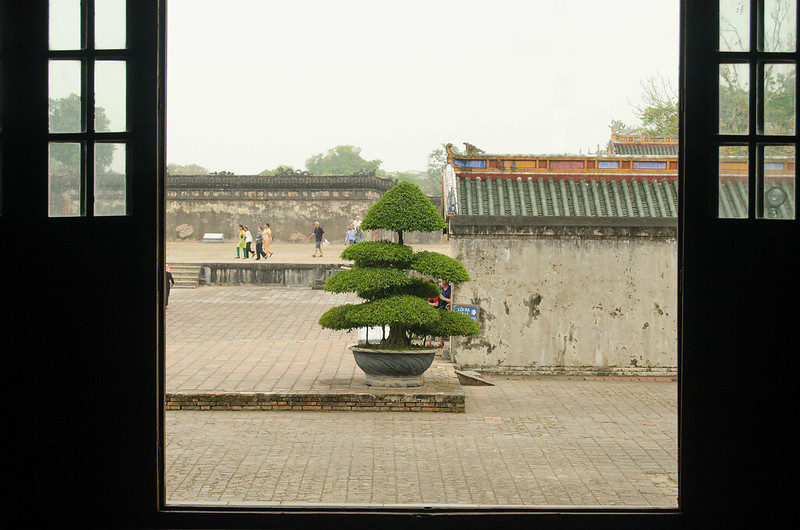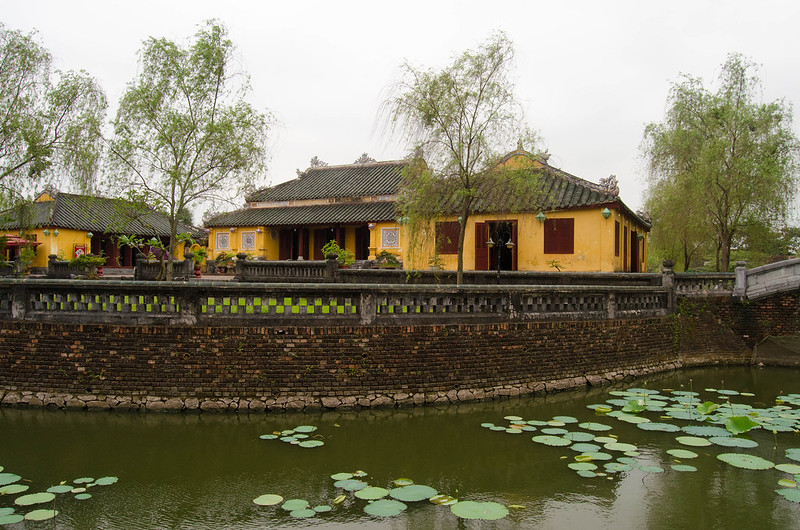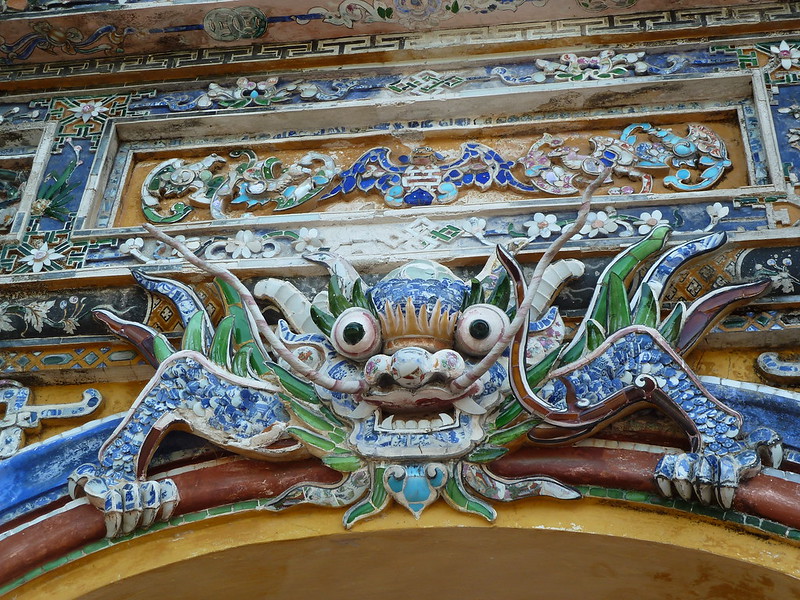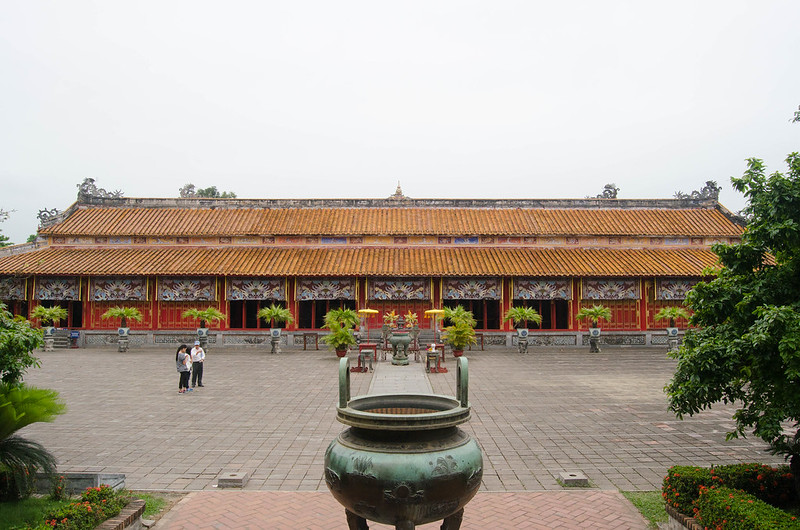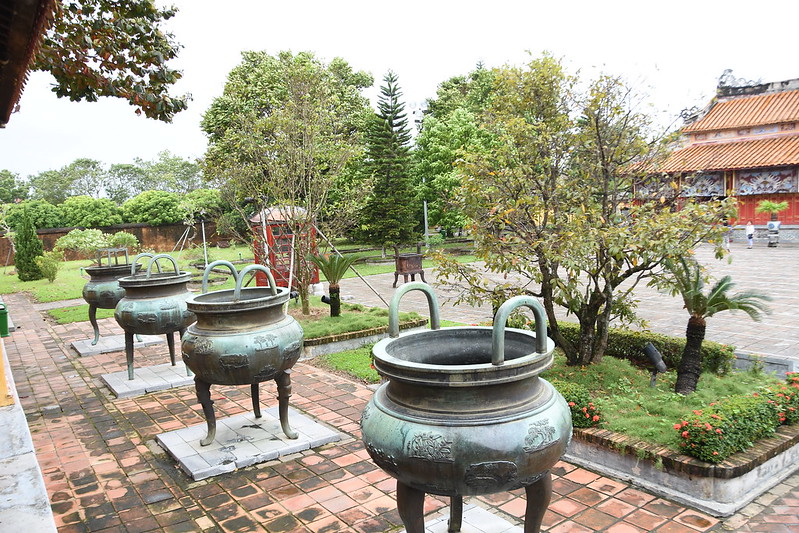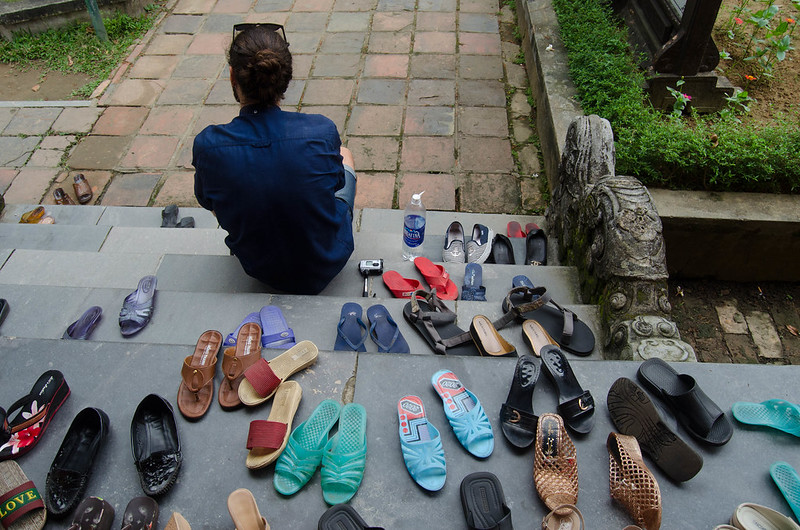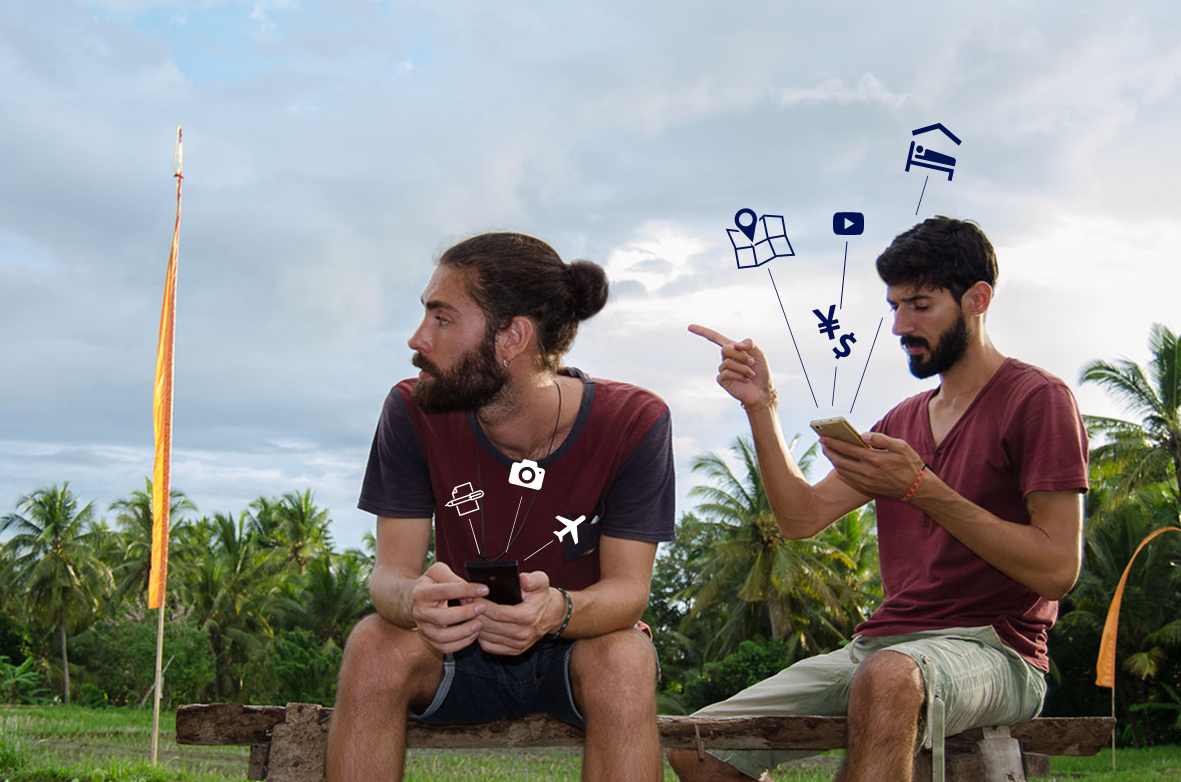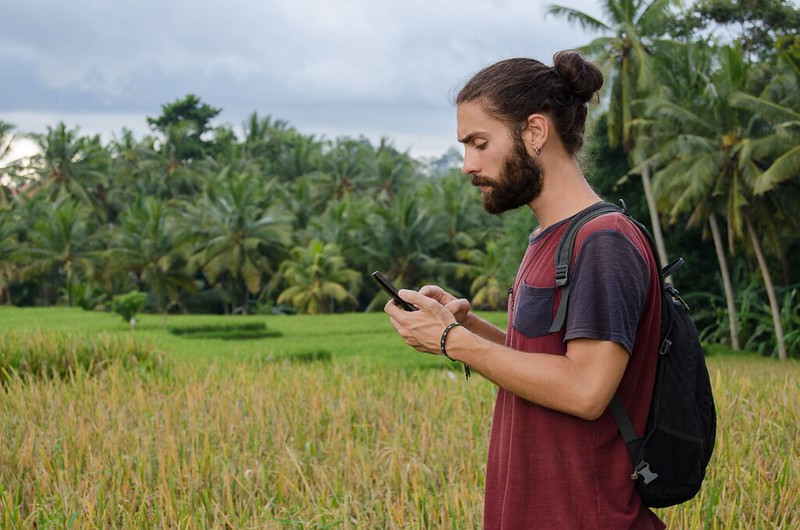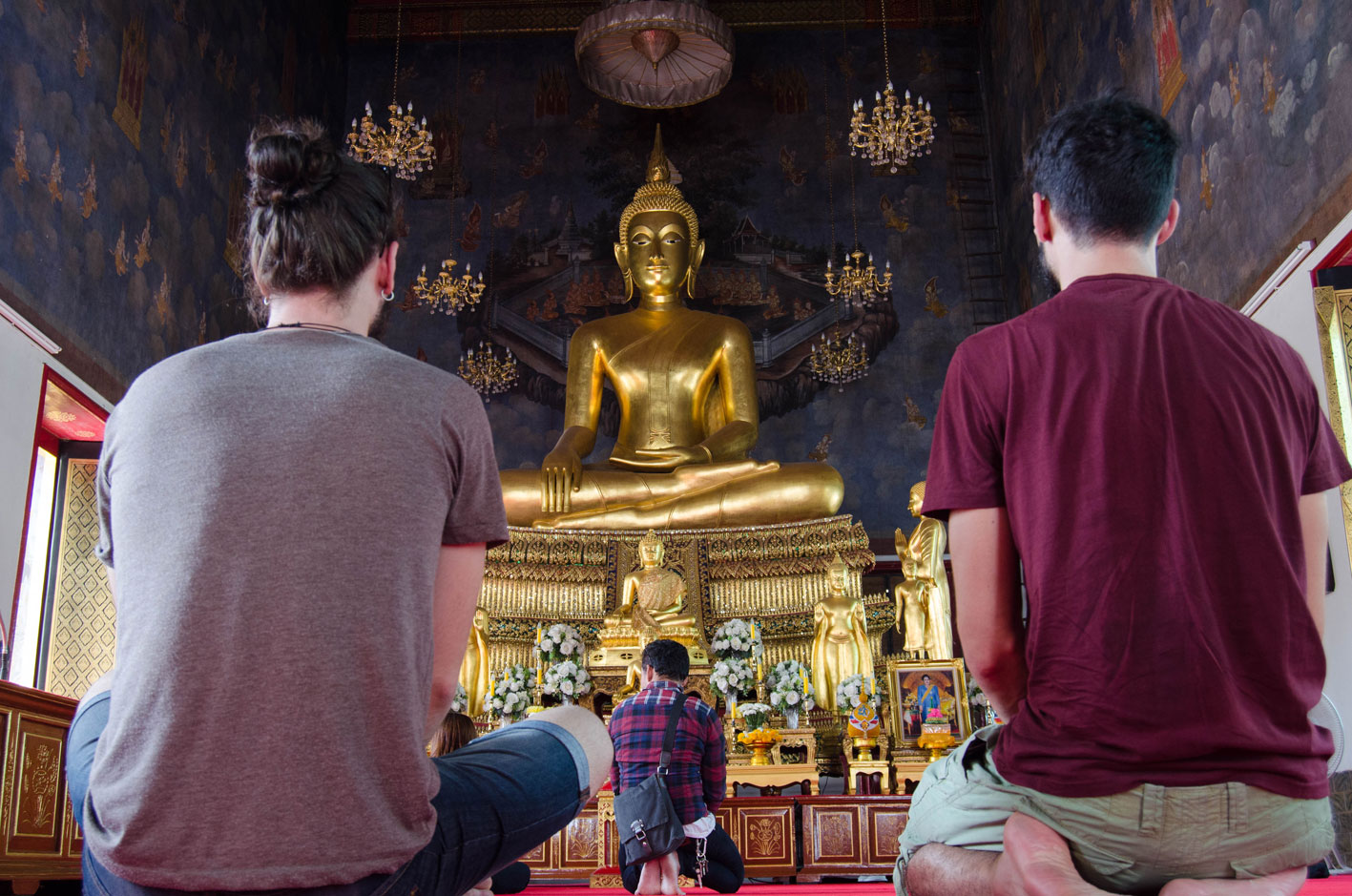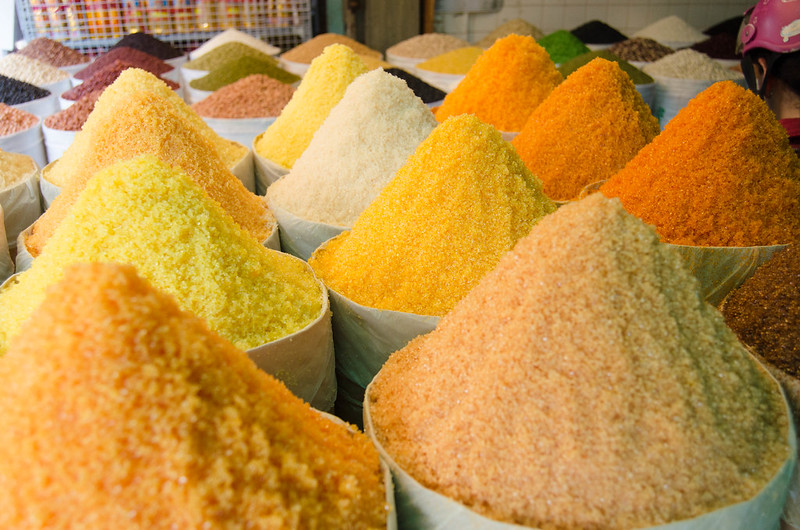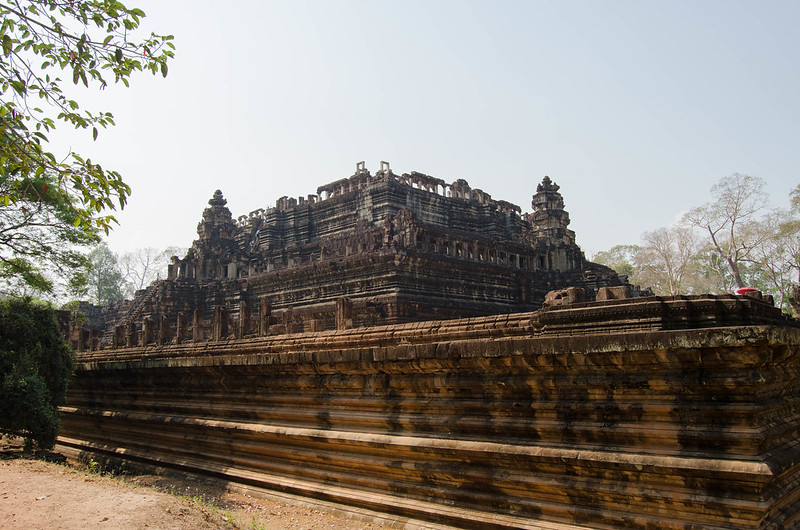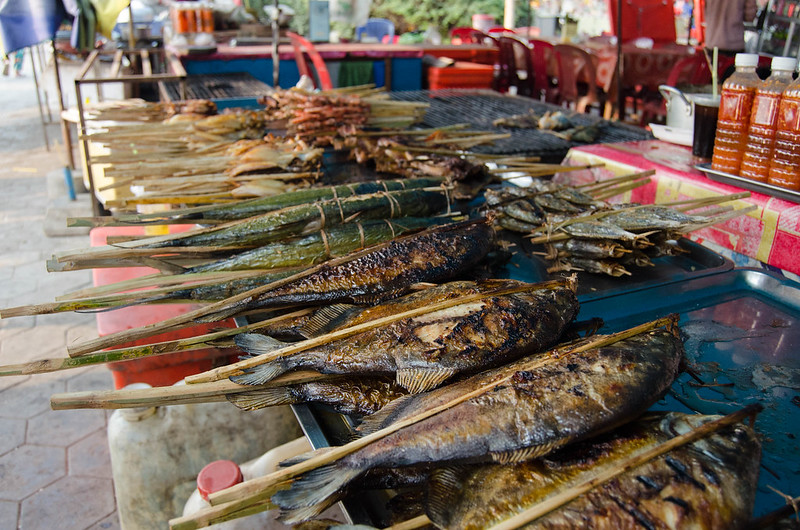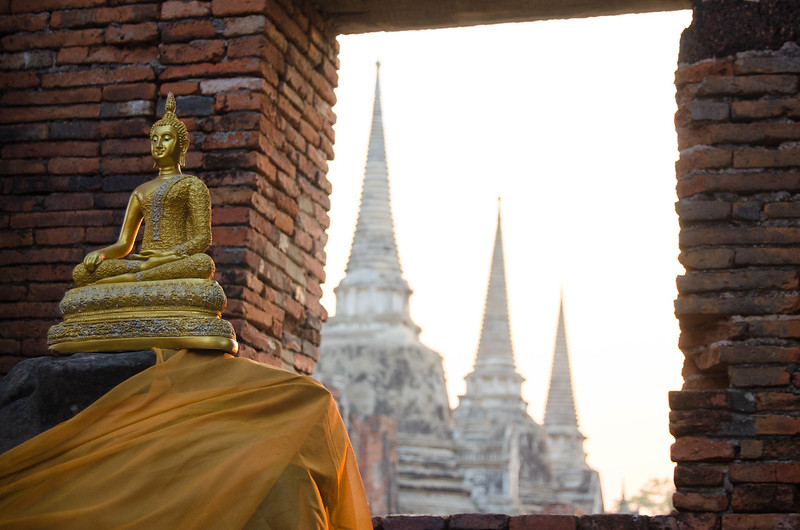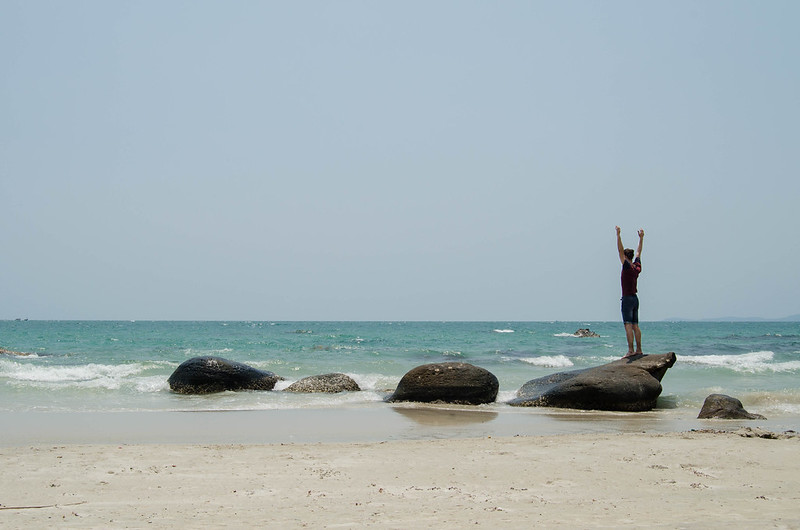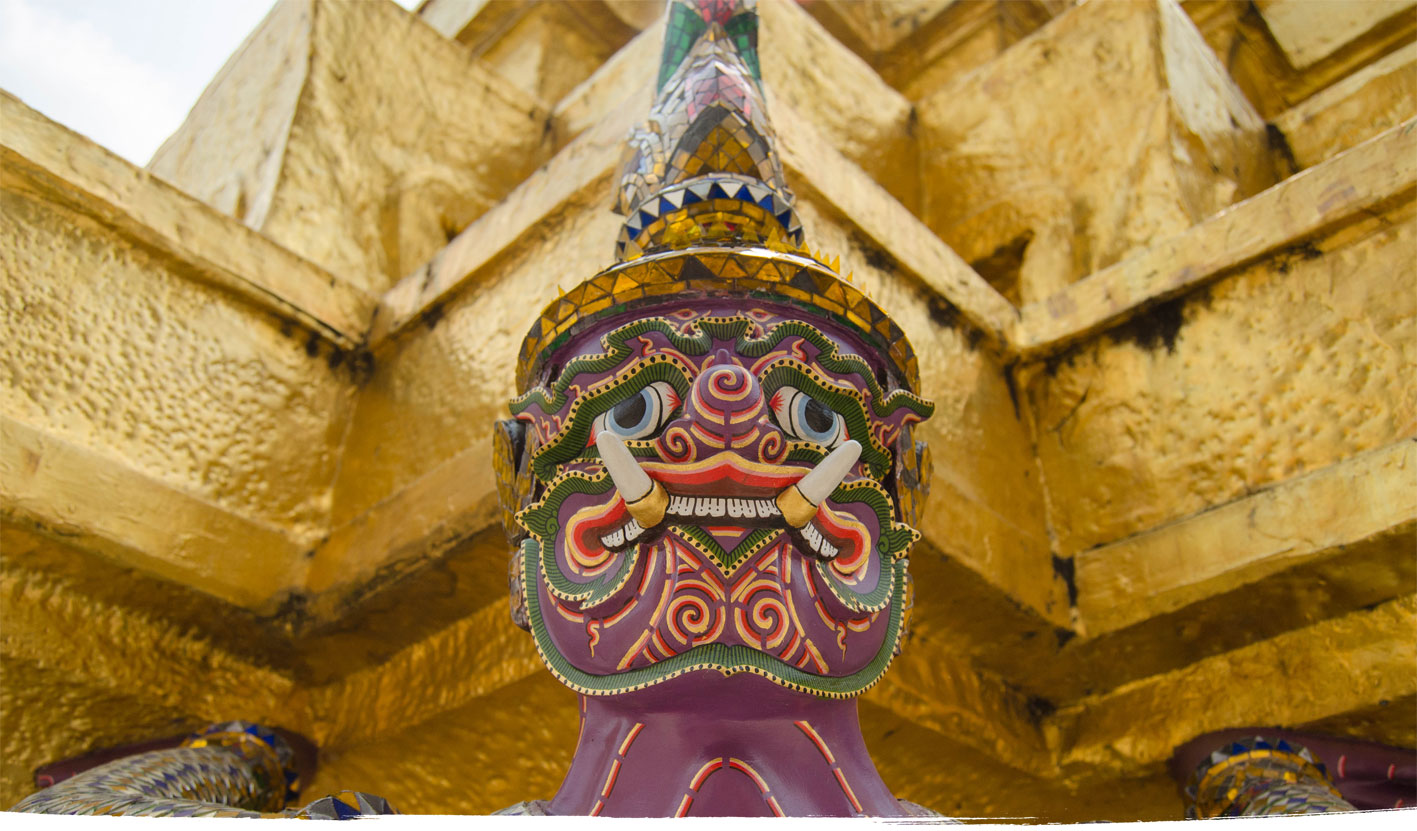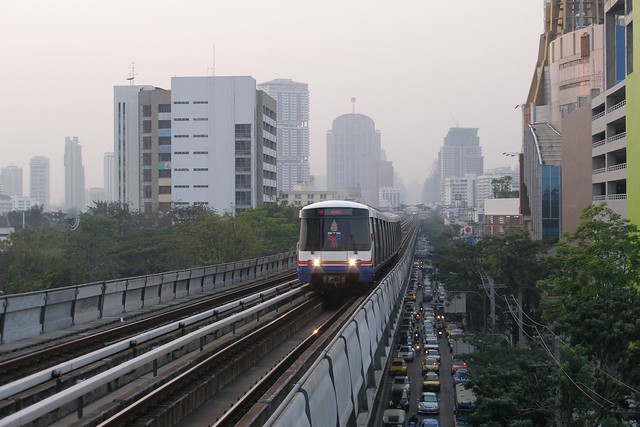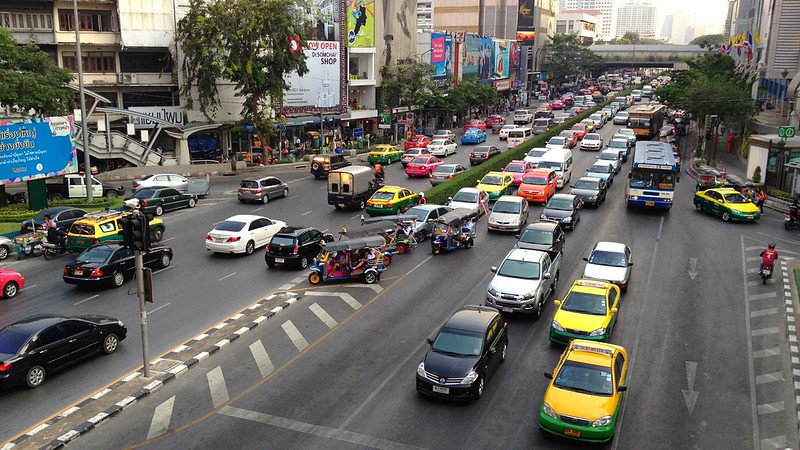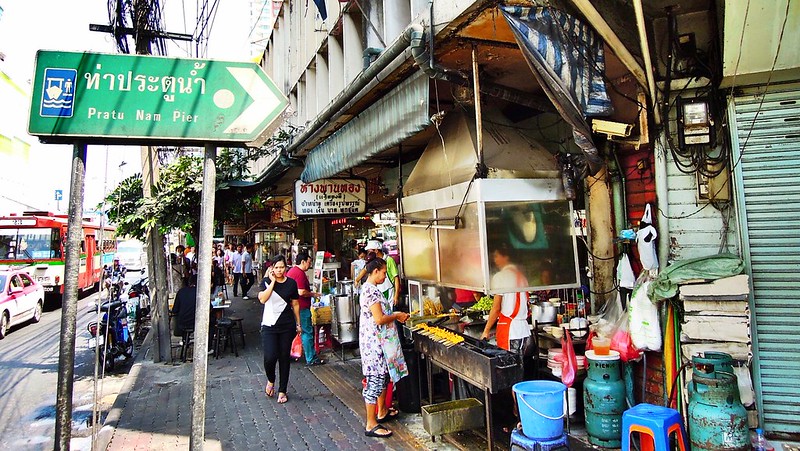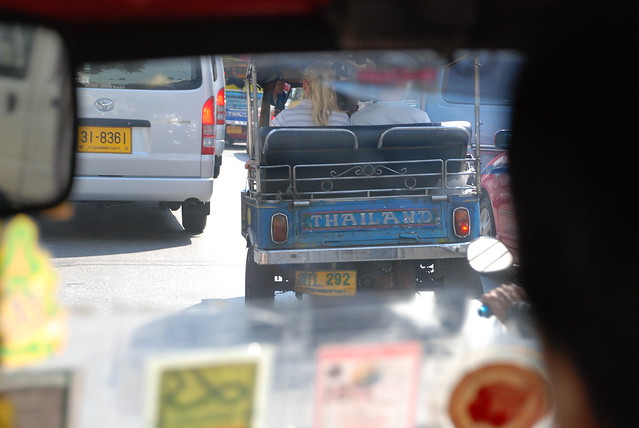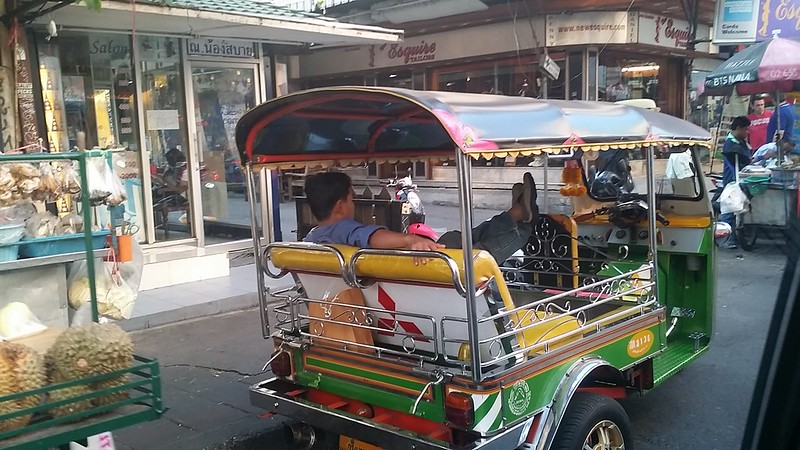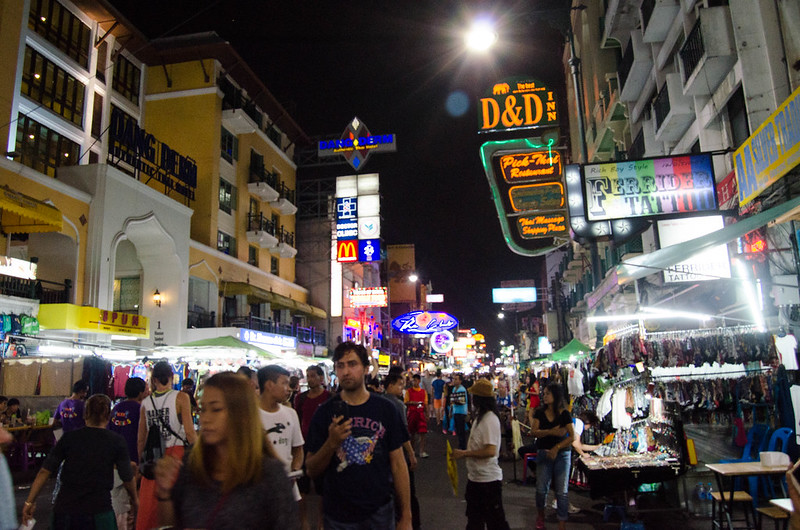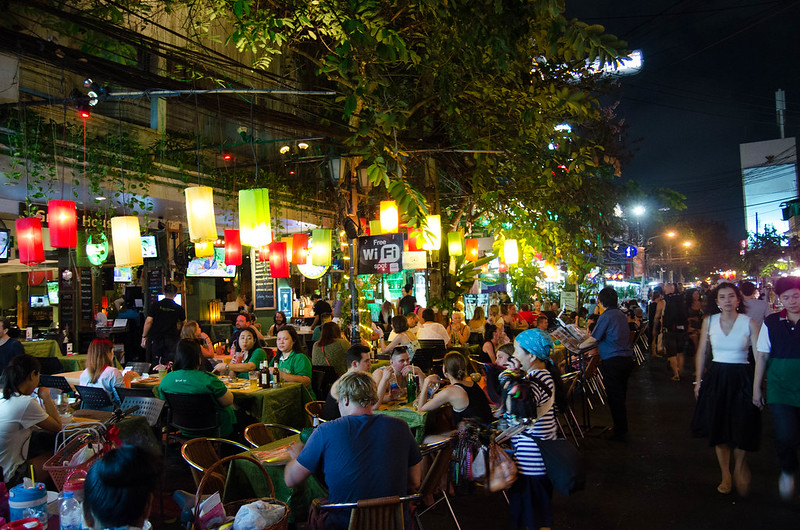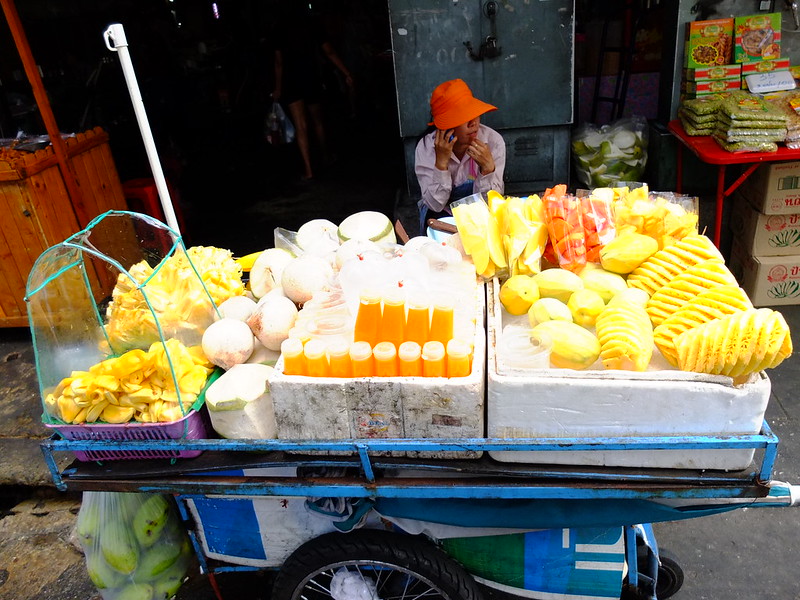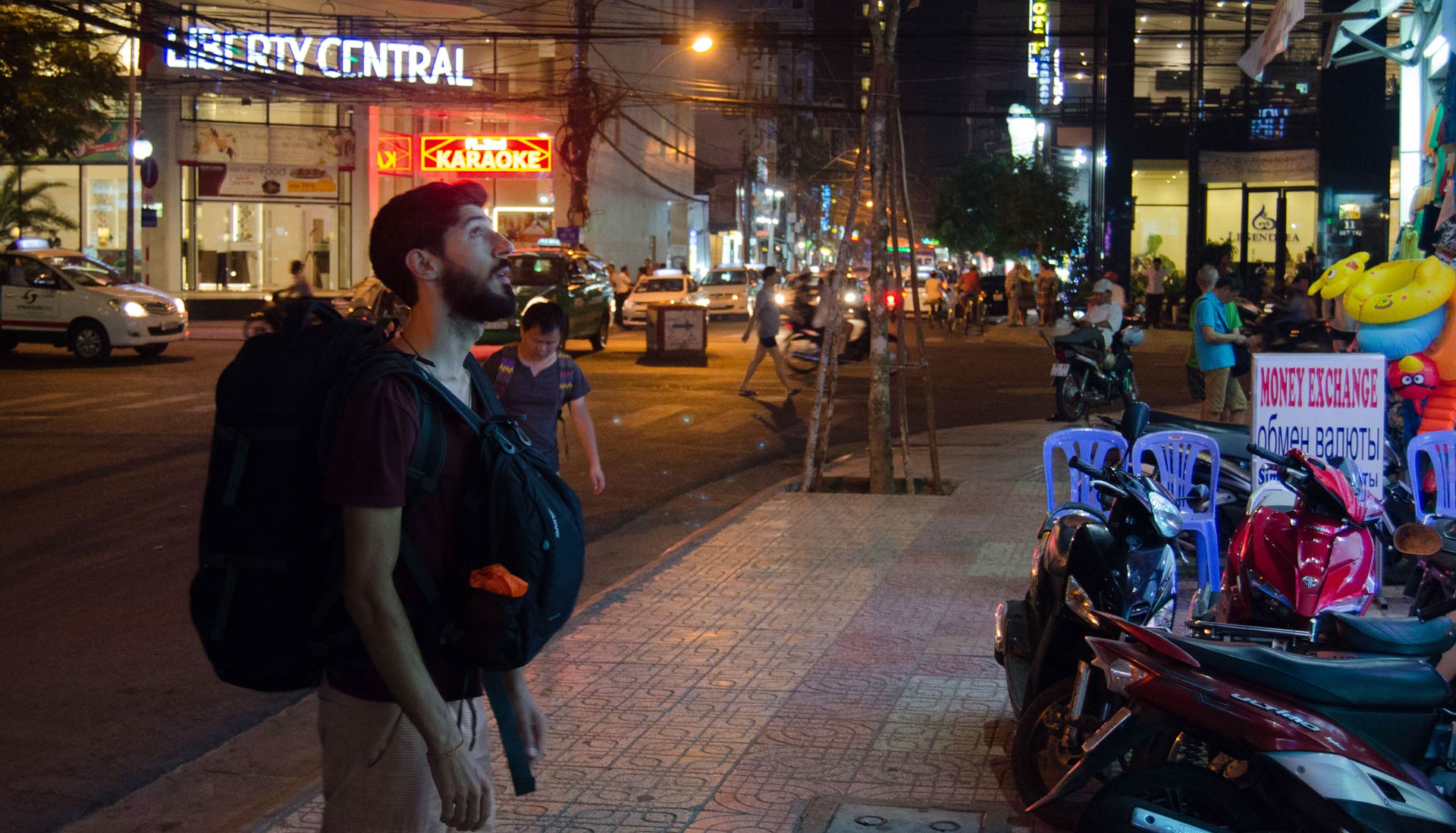Public bus to the bizarre Black House (Baan Dam) in Chiang Rai
If you want to save some money and don’t mind walking for a bit, the public bus is the cheapest option to get to The Black House (Baan Dam) in Chiang Rai.
Still, if you’re looking for an untroubled ride all the up to the gates of Baan Dam, there are some alternatives at the bottom of the post.
Catching the Green Bus
Go to the Chiang Rai old Bus Station (in the city center, near the night bazaar) and find the green bus going to Mae Sai usually parked on Platform 5.
Timetable: green buses departure every 15 to 30 minutes, or when the bus gets full.
Bus ticket price: 20 Baht one-way trip.
Duration: around 20 minutes.
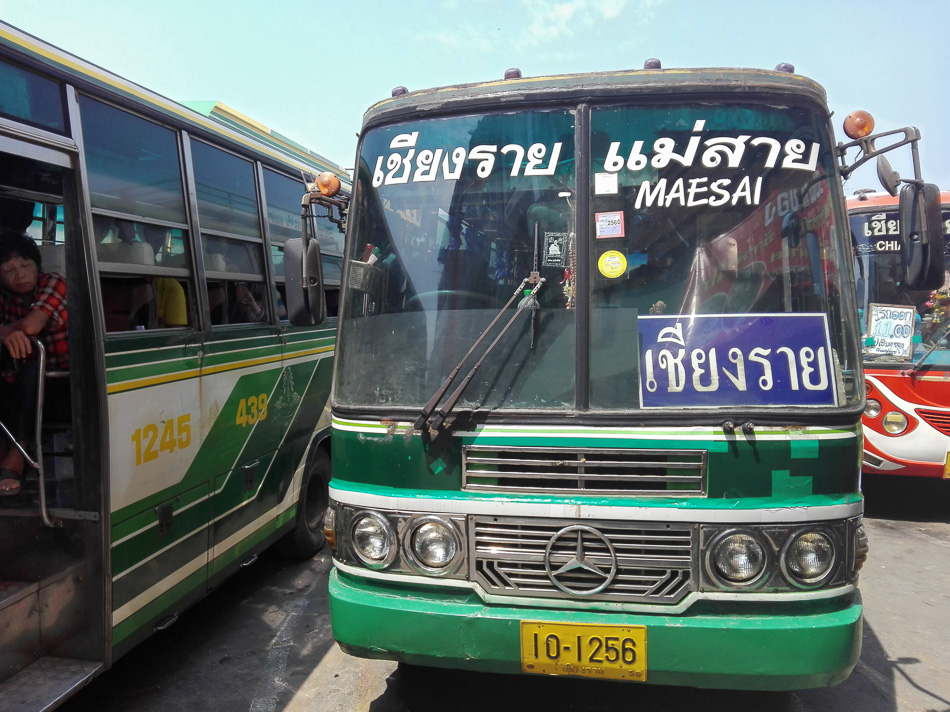
When you buy your ticket inside the bus, let the driver and ticket holder know that you’re going to the Black House so they can signal you at the drop-off point. When you leave the bus you’ll have 2 route options:
The route to the back entrance (the shortest) Updated Nov. 2018
Right next to the drop-off spot is the correct lane to walk on. After walking 50 meters, The Black House buildings will become visible to your left.
Turn left at the wooden-gazeebo-looking-sign indicating Soi 13 and walk a further 10 minutes. This path will take you through some houses and up to a small clearing where you’ll see the back entrance of The Black House.
Heads up: visitors are now charged a fee to enter the park but you can’t buy a ticket at the rear entrance (yet). So even though this route works, you’ll end up being escorted by a guard to the main entrance to buy your ticket — and that can be annoying to him because it’s not his fault that we’re lazy.
Route to the front entrance
Alternatively, instead of turning left on Soi 13, keep walking straight on the paved road for approximately 400 meters and then turn left into a small Soi that takes you to the front entrance of Baan Dam. Check the map below.
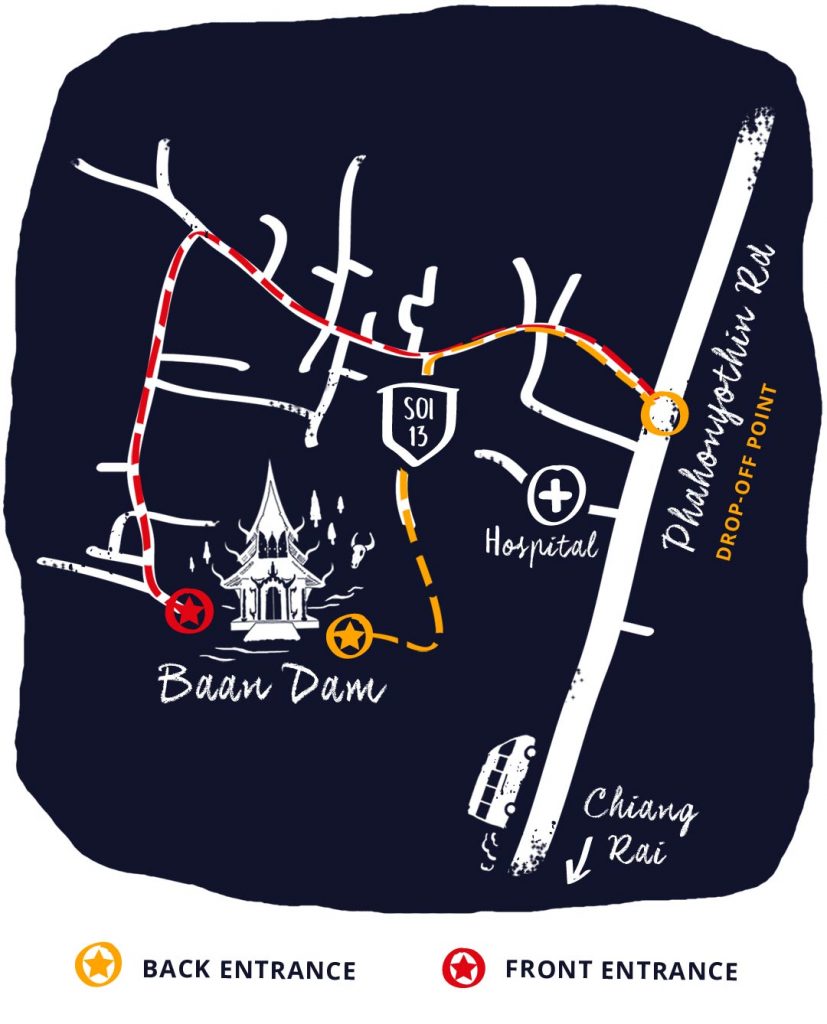
Baan Dam – The Black House
Opening hours: opens daily (weekends included), from 09:00 AM to 5:00 PM.
Closes for lunch from 12:00 PM to 1:00 PM.
Entrance fee: 80 Baht.
In a 100 acres parkland in the Ban Du district, north of Chiang Rai, Thai artist Thawan Duchanee spent 25 years creating Baan Dam (the Black House).
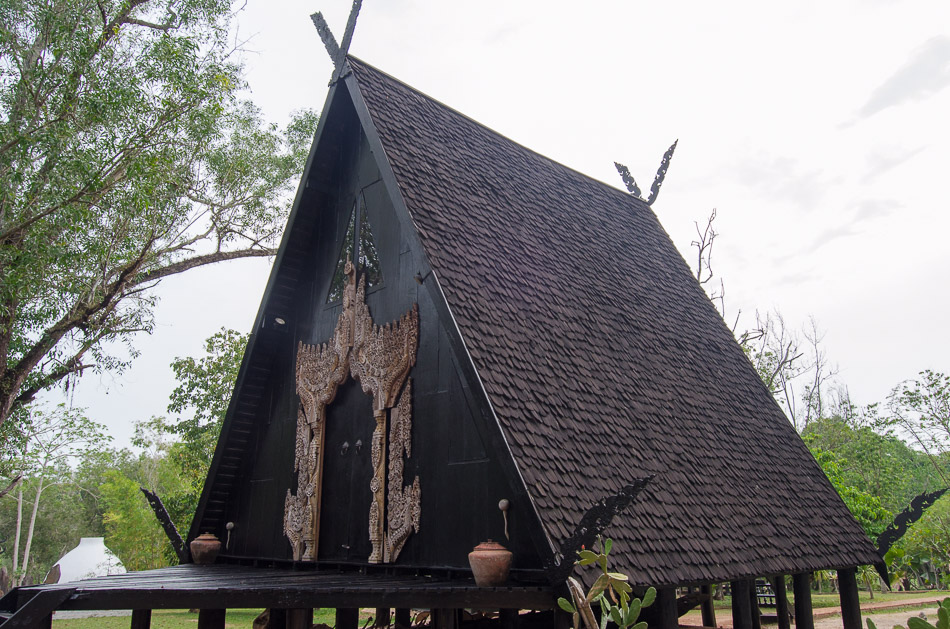

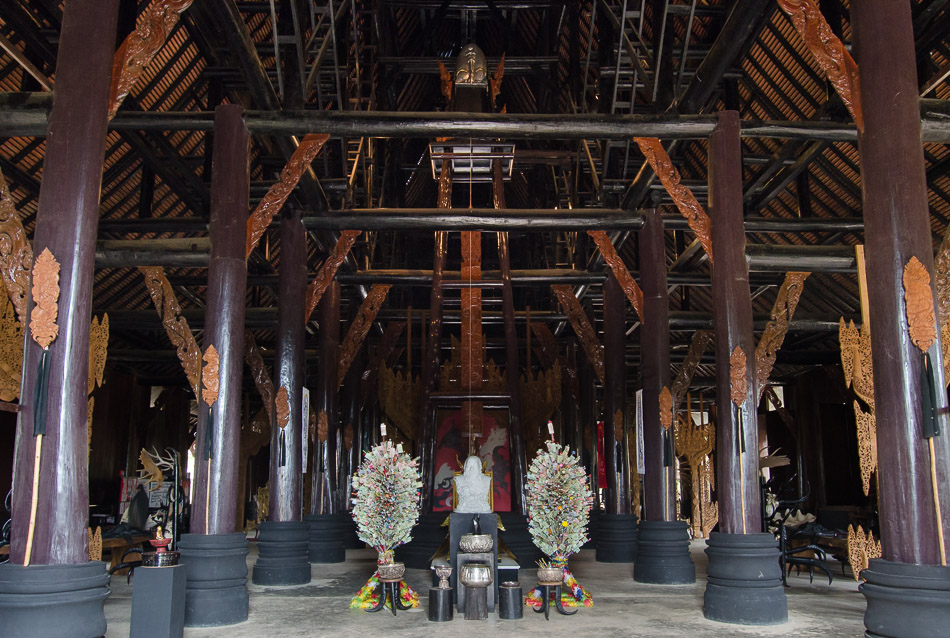

There are 40 buildings spread around the park along with art pieces and installations. Most buildings are made of black wood and decorated with macabre elements like bones, animal skins, pelts, and dead animal parts.
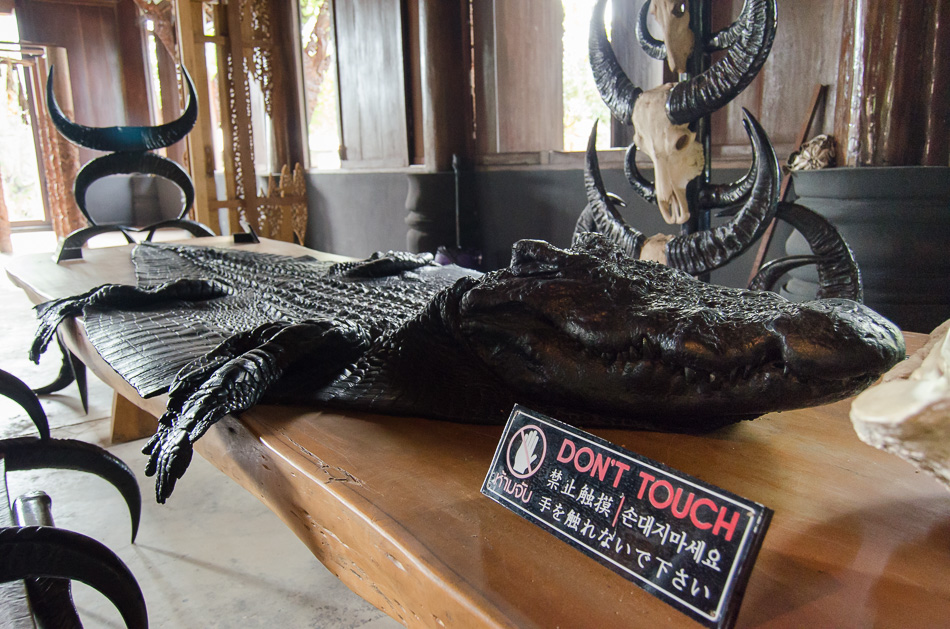
Duchanee’s art mixes traditional northern Thai design with Balinese, Burmese and African influences—and it’s all open to interpretation.
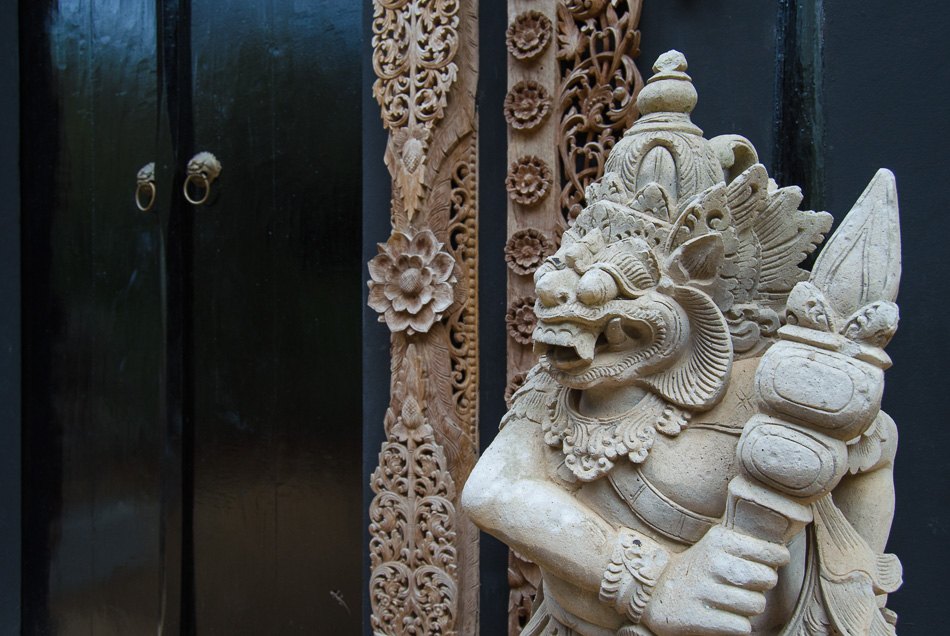
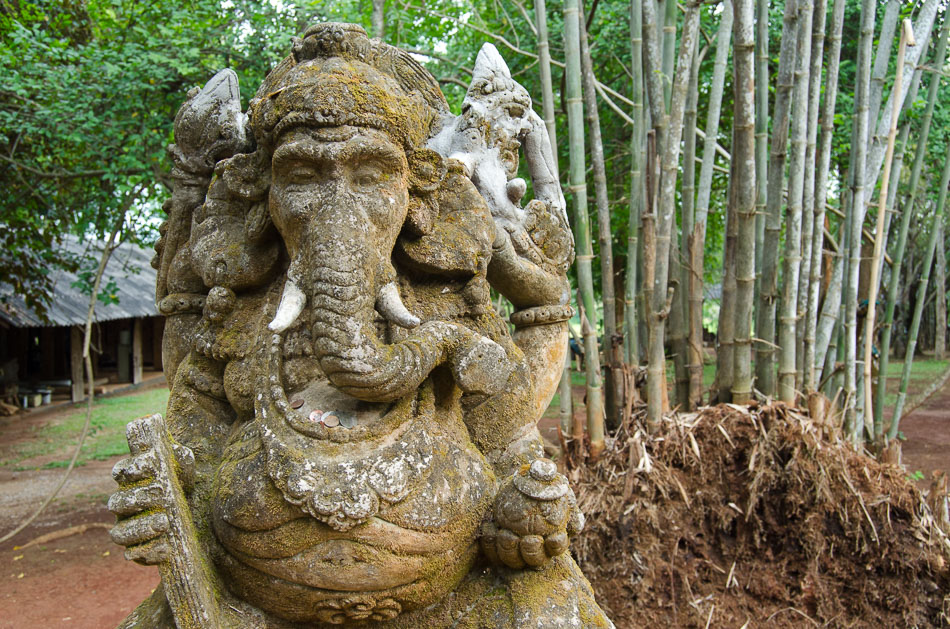
Some people see it as a commentary on Buddhist philosophies, while others state that his intention was to remind us of the darkness inside ourselves, and the imminent death of all things.
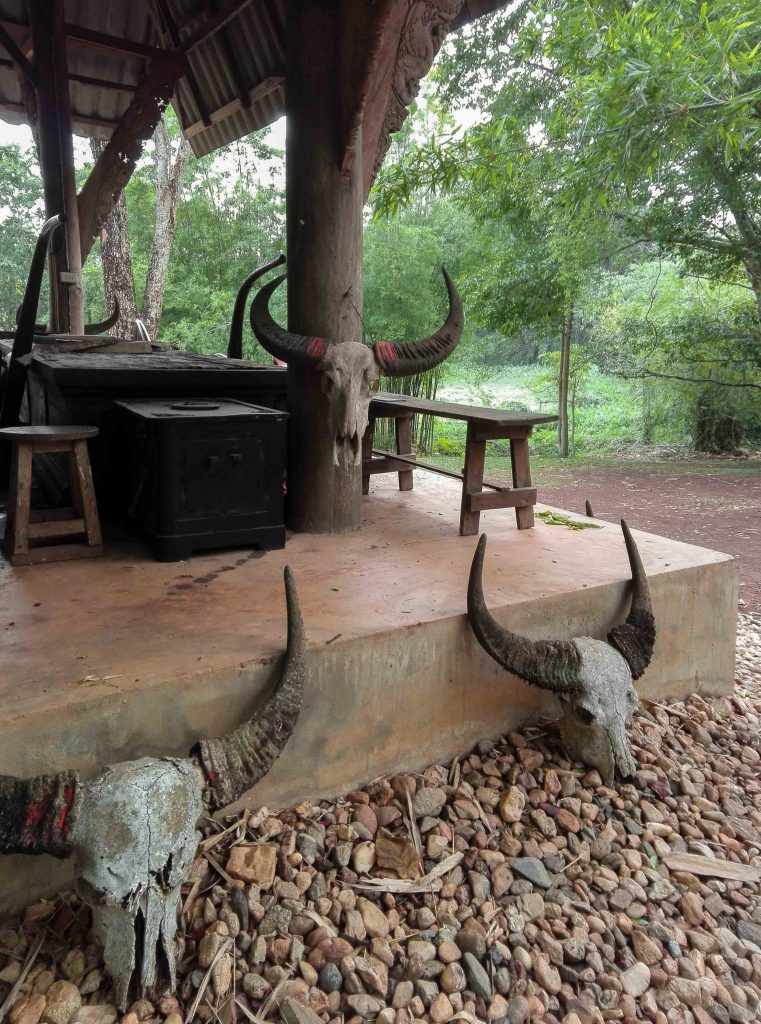
There’s a palpable, creepy vibe as you stroll around the park, but also a subversive sense of humor. It’s like the artist was trying to tell us: “Don’t take life too seriously, we’re all going to die”.
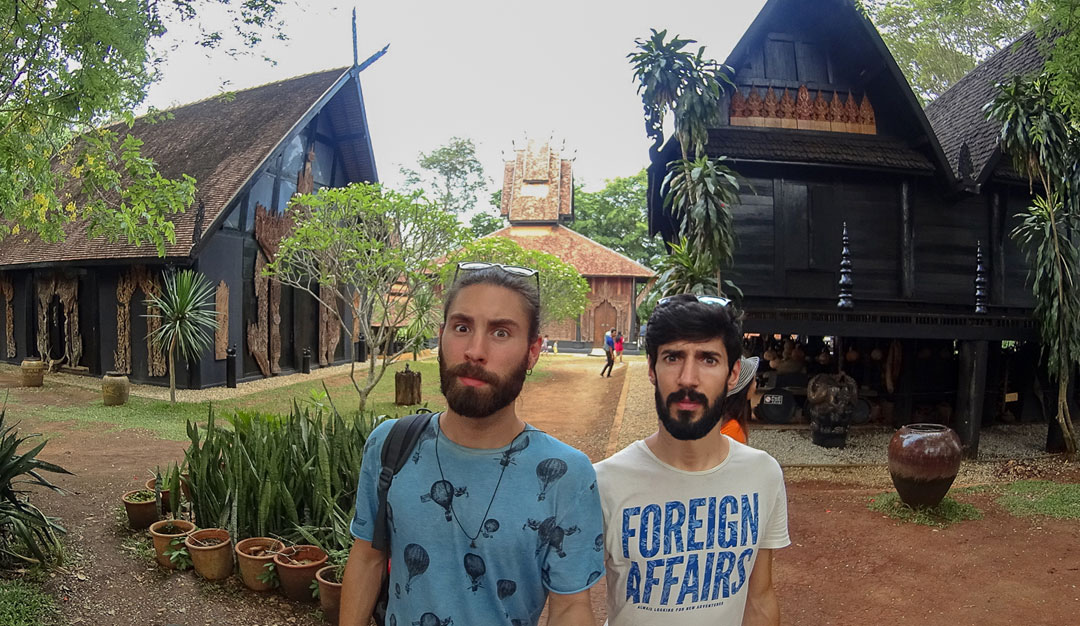
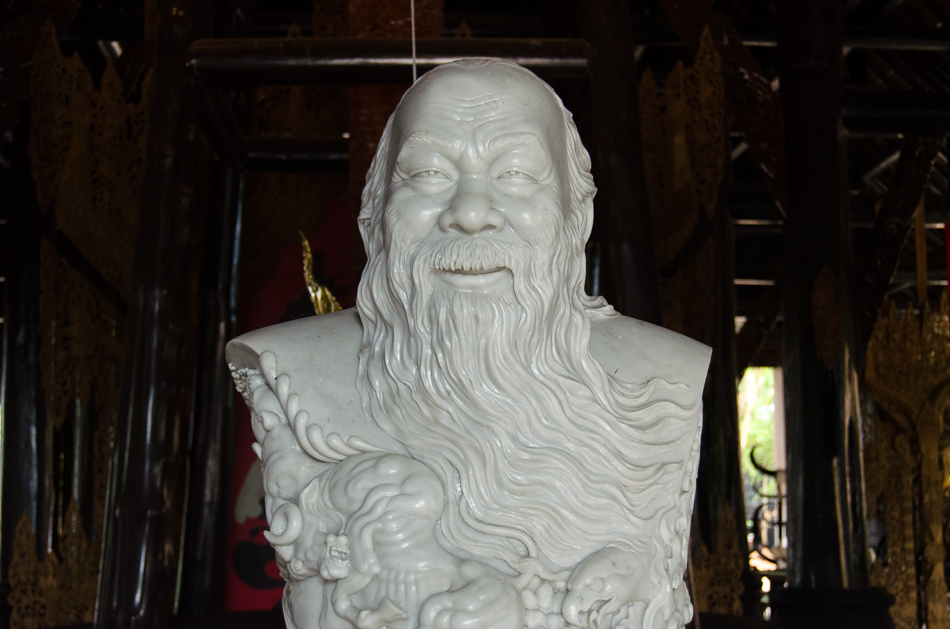
Portrait sculpture of Thawan Duchanee (1939-2014)
Back to Chiang Rai Bus Terminal
Head back towards the highway where you got off the bus and hail to any bus you see going in Chiang Rai direction — either the green ones you came in or the grey mini-buses. Have in mind that there’s no bus stop there.
The trip back to Chiang Rai is a further 20 THB.
Transportation alternatives
Hire a songthaew in Chiang Rai for about 300 Baht for the round trip. They’ll try to charge you more, so be ready to negotiate.
Any travel agency in Chiang Rai sells organized tours to Baam Dam that often include a visit to Wat Rong Khun. Prices will vary from agency to agency, so look around for the best deal.
Have in mind that departure and arrival times will be scheduled to fit everything on a tour. So you will be rushed.
Can we ask for a favor?
It’s likely that a ticket office will open in the back entrance. So if you try the rear entrance route, let us know if you were able to buy your tickets there — it’ll help other travelers.
Thanks in advance!
10 Vang Vieng attractions and activities
Unlike other Laotian cities with a non-existent nightlife, Vang Vieng stood out as one of Southeast Asia’s rowdiest party hotspots, attracting backpackers with cheap alcohol, drugs, and wild river bank parties. But by 2011, with the accidental deaths of 27 tourists that year alone, the Laos government was forced to intervene and put the brakes on the unregulated disorder.
Consequently, many bars were closed, tubing was banned, security tightened, and Vang Vieng almost disappeared from travel itineraries.
Nowadays and despite its reputation, Vang Vieng tries to slowly reorient itself from a party haven to an adventure destination. And on that note, we put together the 10 best activities to do while you’re in town:
1. Bicycle and motorbike rides
Cycling is the best and cheapest way to get to the spots we’re mentioning in this post. The terrain in Vang Vieng is almost flat, and the landscape makes the effort worthwhile.
Bicycle rental cost: €1.60
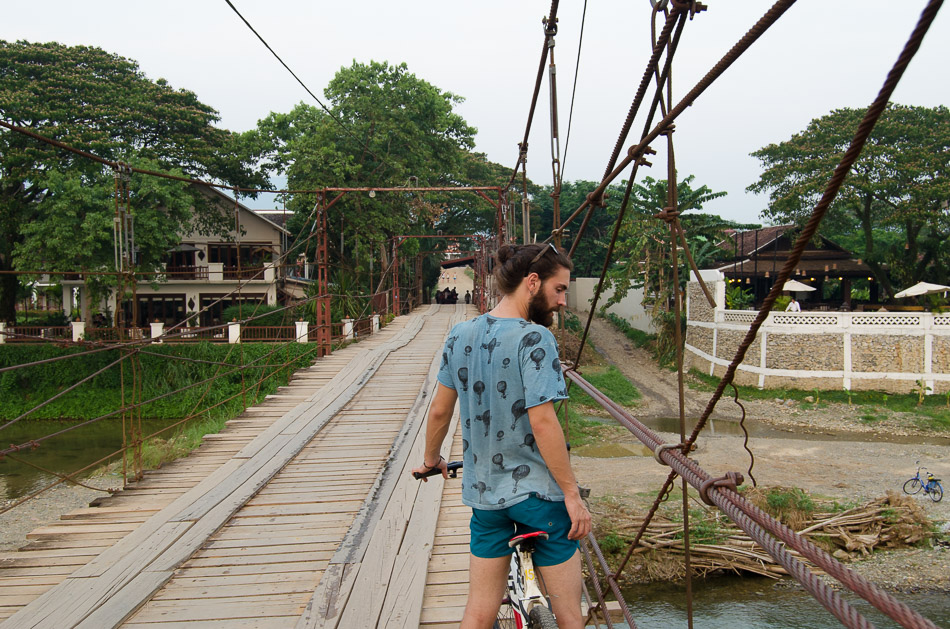
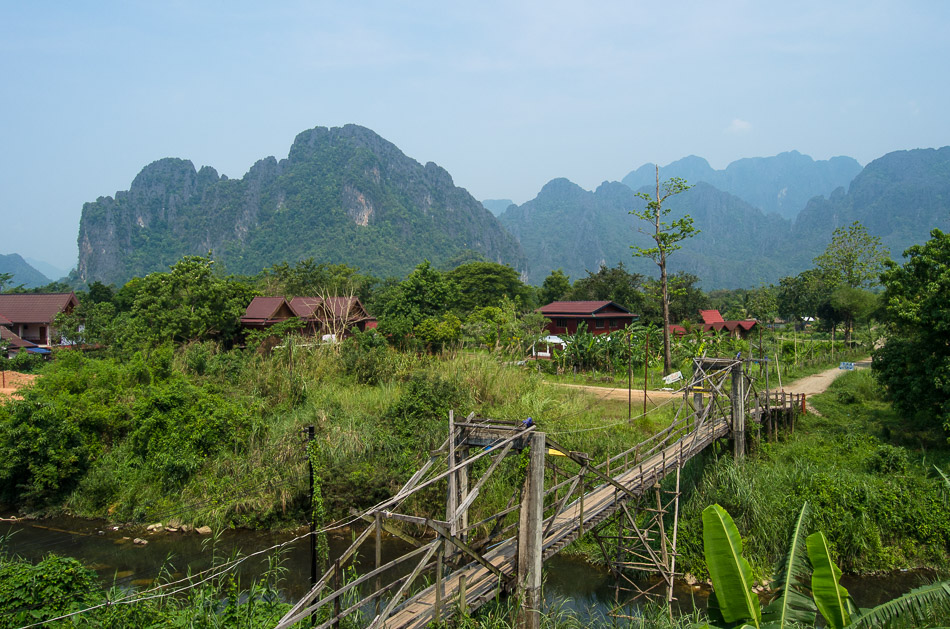
If you don’t like pedaling, the second best option is to rent a motorcycle.
Motorbike rental: €7,93 (70,000 kip) for a full day or €4,53 (40,000 kip) for half day.
Tip: start early to avoid the crowds in the street.
2. Nam Song River banks
One of the big attractions in town is the Nam Song River still being explored for tourist activities—but in a more contained way.
These days, you can relax on the small wooden pergolas by the riverbank while listening to music, dipping your feet in the river and drinking a beer.
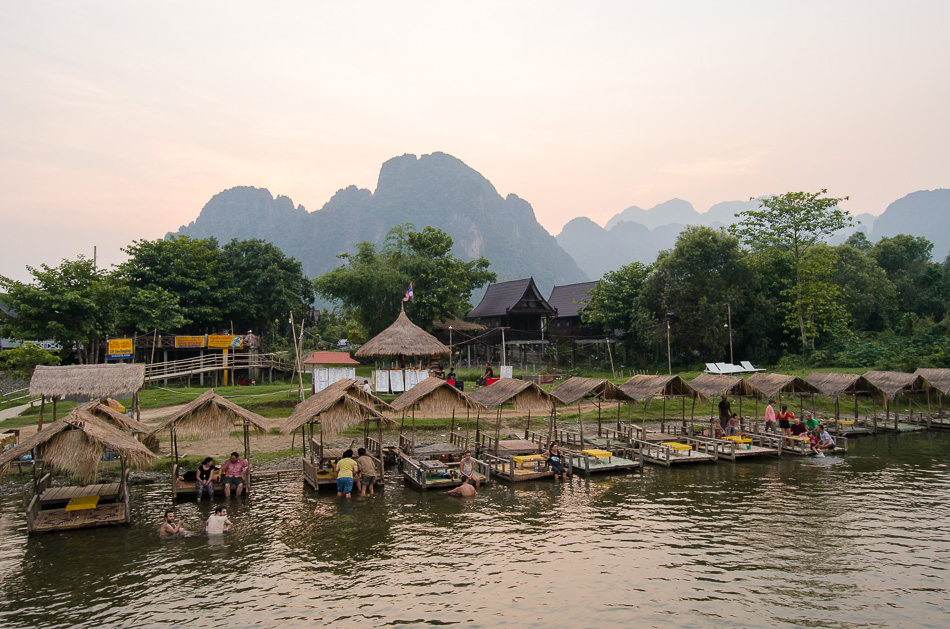
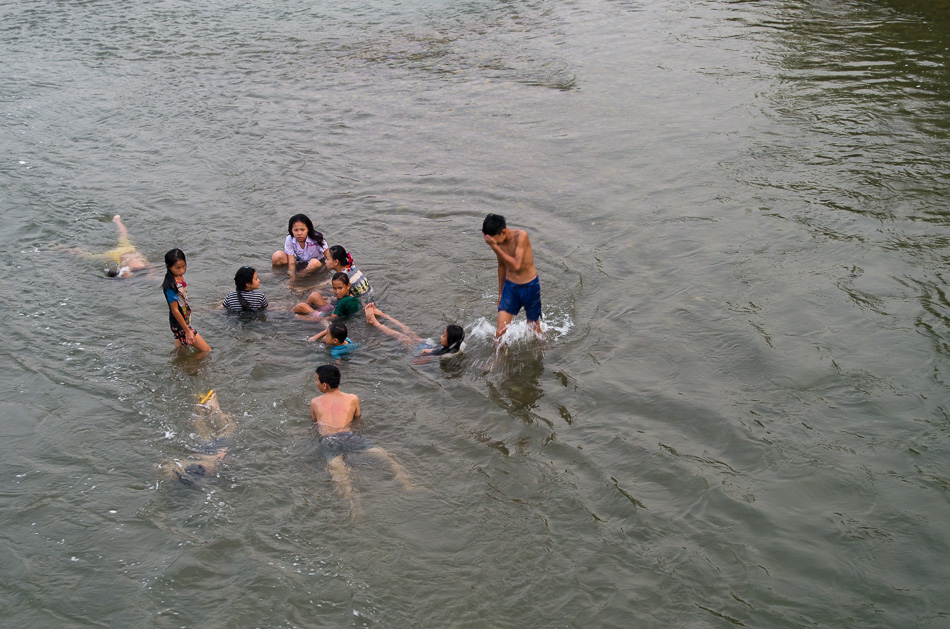
3. Blue Lagoon
It’s an obligatory must-do in Vang Vieng and just like the Kuang Si Waterfalls in Luang Prabang, its lush surroundings and the turquoise water makes it a super-popular swimming spot. There are swings, a slide, ropes and tree branches serving as diving boards. If you manage to pull off an acrobatic dive you might get a standing ovation from the people below.
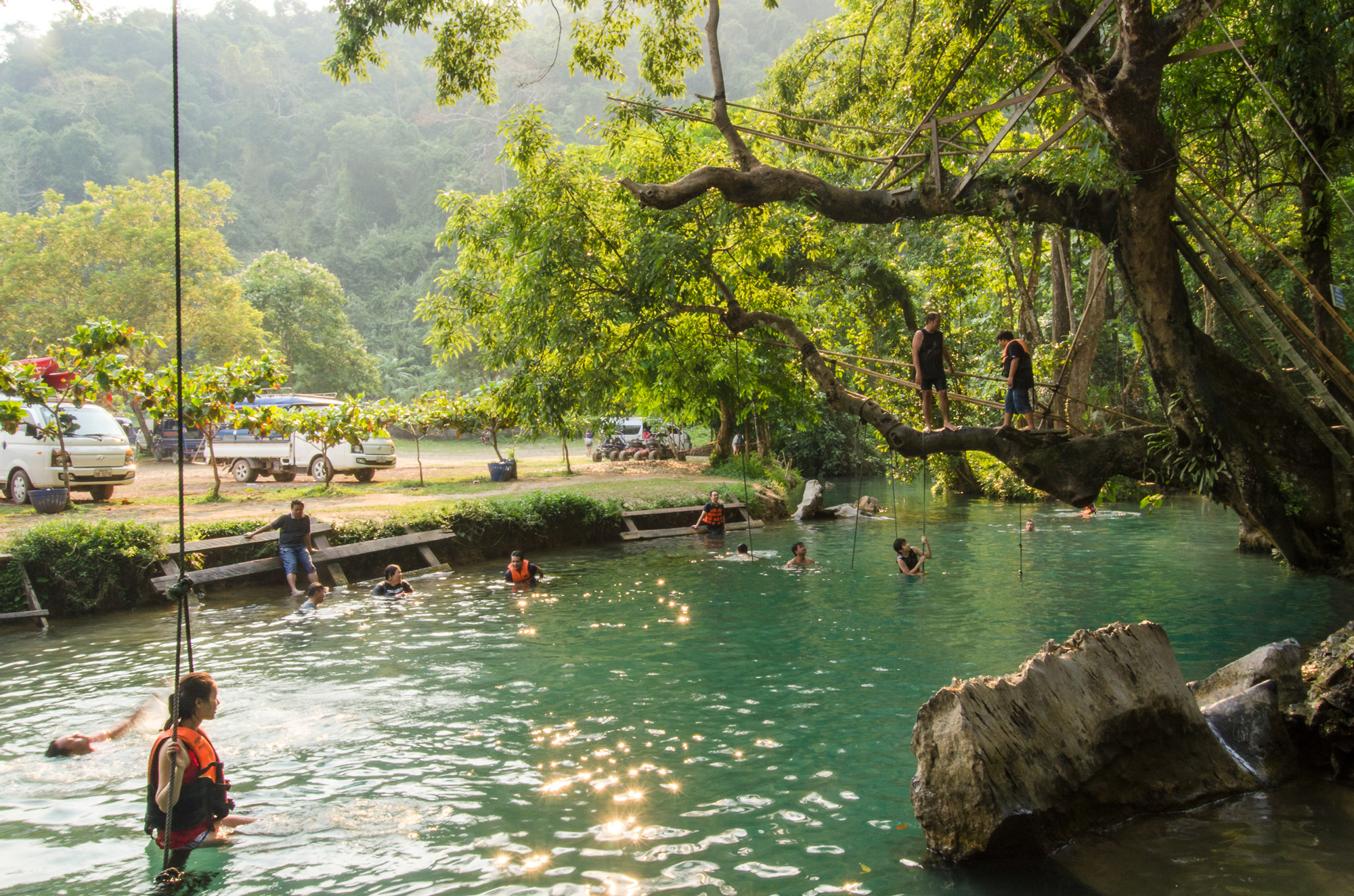
To reach the blue lagoon by yourself is best to use Maps.me as there’s a lot of misinformation on the way there.
Entrance fee: €2,13 (20.000 kip)
Parking fee: €0,23 (2.000 kip) for your bicycle.
4. Cave visits
Tham Phu Kham Cave
Right next to the blue lagoon is the entrance to Tham Phu Kham cave. Walking the trail to the entrance is not that easy as the path is quite narrow and steep.
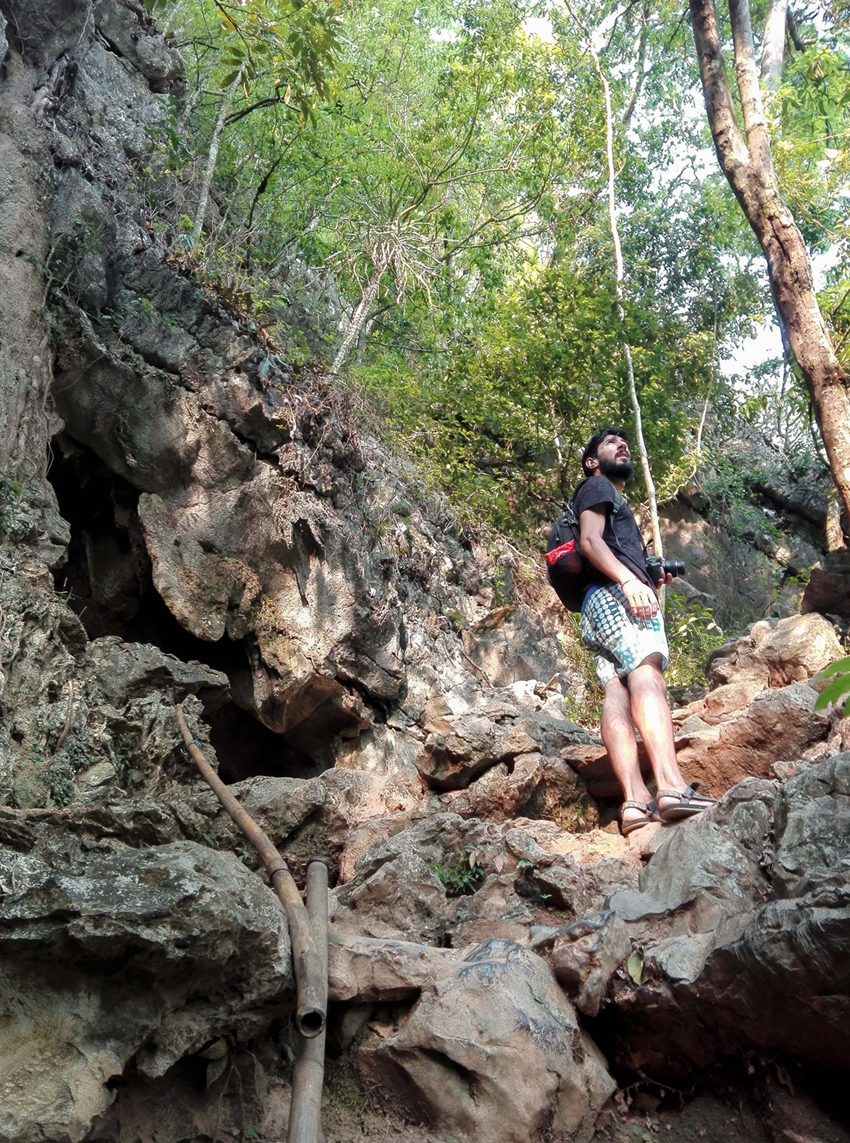
The cave itself is huge with a lot to explore but go slow because it’s dark inside and the stones are slippery.
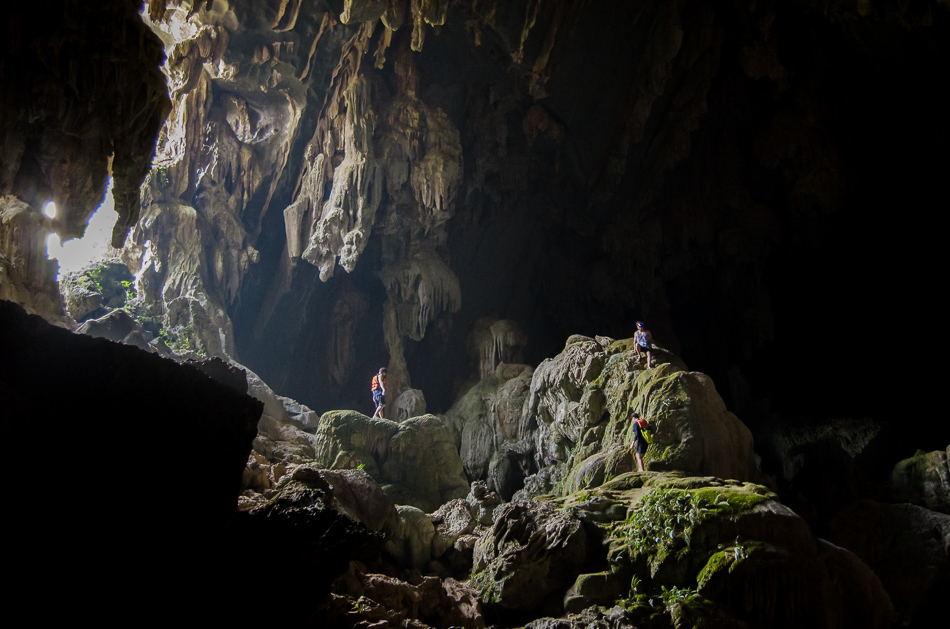
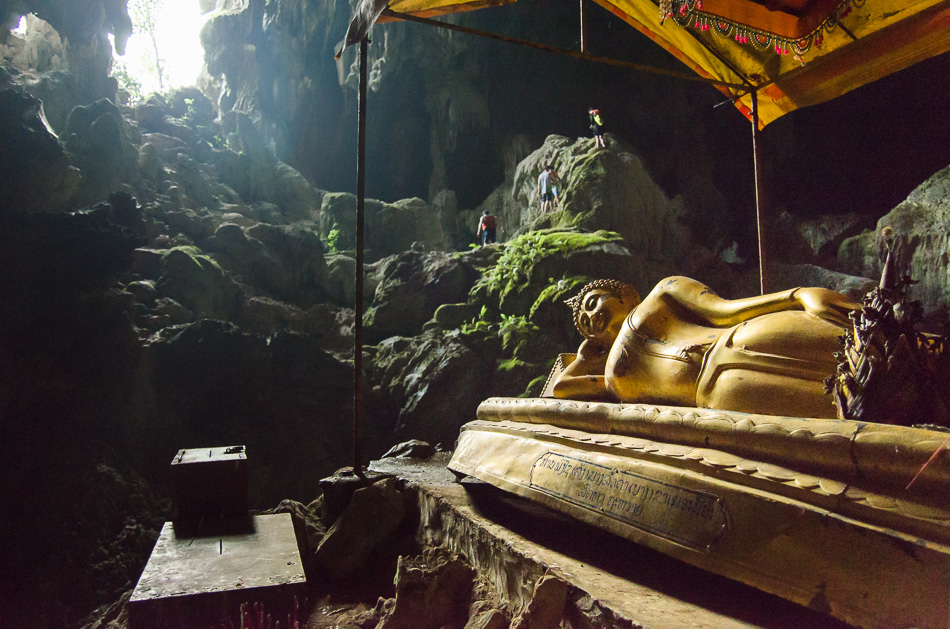
Tham Jang (or Tham Chang) Cave
Because Vang Vieng is surrounded by caves and because not all caves are the same, we’re going to mention Tham Jang. This cave was used as a hideout from Chinese bandits during the 19th century and unlike others, the chambers inside Tham Jang are paved and well-lit.
Also, there’s a small blue lagoon by the entrance where you can swim in.
5. A day tour in Vang Vieng
You’ll find plenty of opportunities to book an adventure tour as every hostel in town has a myriad of options to pick from:
• Tubing
• Kayaking
• Water cave visits
• Rock climbing
• Nature tours
• Hot air balloon rides
We bought a full day tour from our hostel for €11.30 (100,000 kip) that included: pick-up and drop-off at the hostel, a visit to Tham Sang Cave, water cave tubing, lunch (BBQ skewer, rice, bananas, and water), and kayaking along the Nam Song river. Cheap as chips!

6. Floating through a water cave
Stuff all your things in a waterproof bag, grab a headlamp and jump on a tube! Now, drag yourself by a rope while floating into Tham Nam cave and explore!
Tham Nam was dark and narrow, but the experience felt more exciting than claustrophobic.
7. Tubing and Kayaking along the Nam Song River
After a 5 minute instruction in broken English, we were going down the river on a kayak passing by other people tubing and frustrated with the slow current.
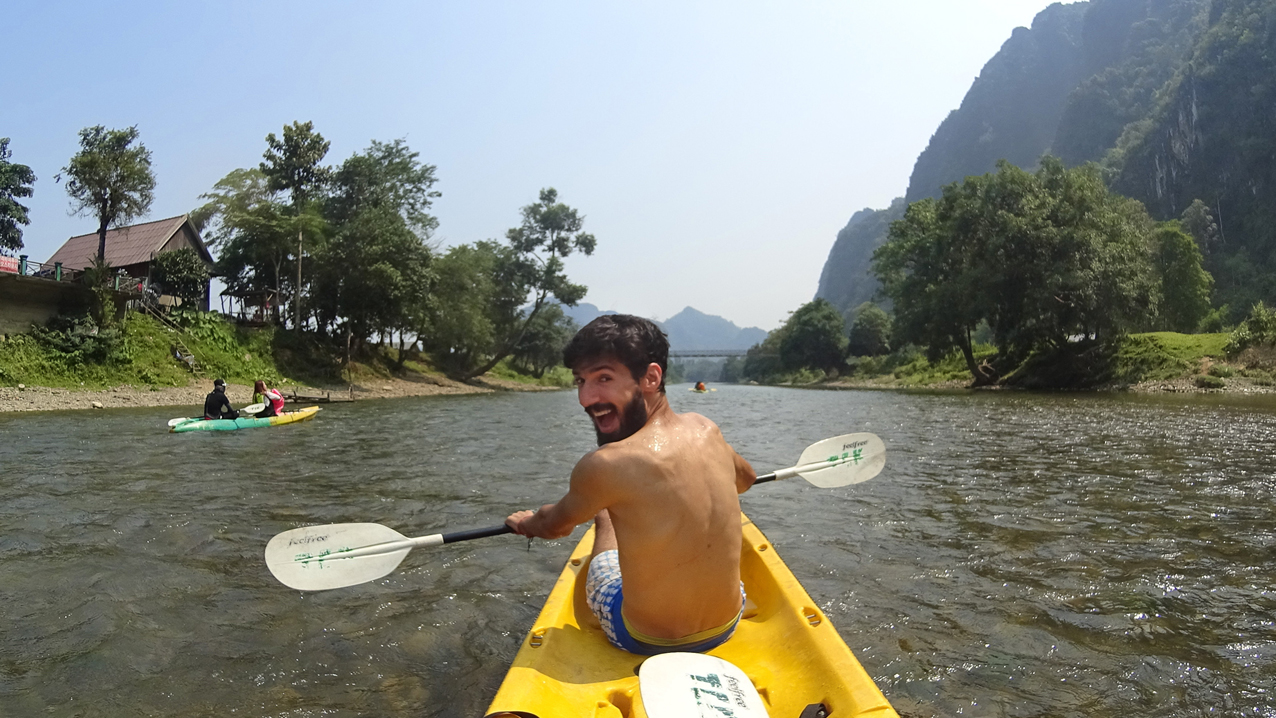
Halfway in, we stopped by one of the few river bank bars still open. We rested, chatted, and drank a beer. The bar had a basketball and volleyball courts where the whole group got to play.
Along the river were many abandoned wooden structures from past bars proving we’re not in Vang Vieng golden era anymore.
8. Hot air balloon ride
Vang Vieng has the perfect arguments that justify a hot air balloon ride: epic limestone cliffs, rivers, scenic farming villages and great prices. You can go up at sunrise or sunset, but remember to book your ride at least one day in advance.
The ride should cost between 65€ (650.000 kip) and 70€ (700.500 kip) from one of the tour agencies around Vang Vieng. Don’t book it online as prices may go up to €130 (1.300.930 kip) for the exact same ride!
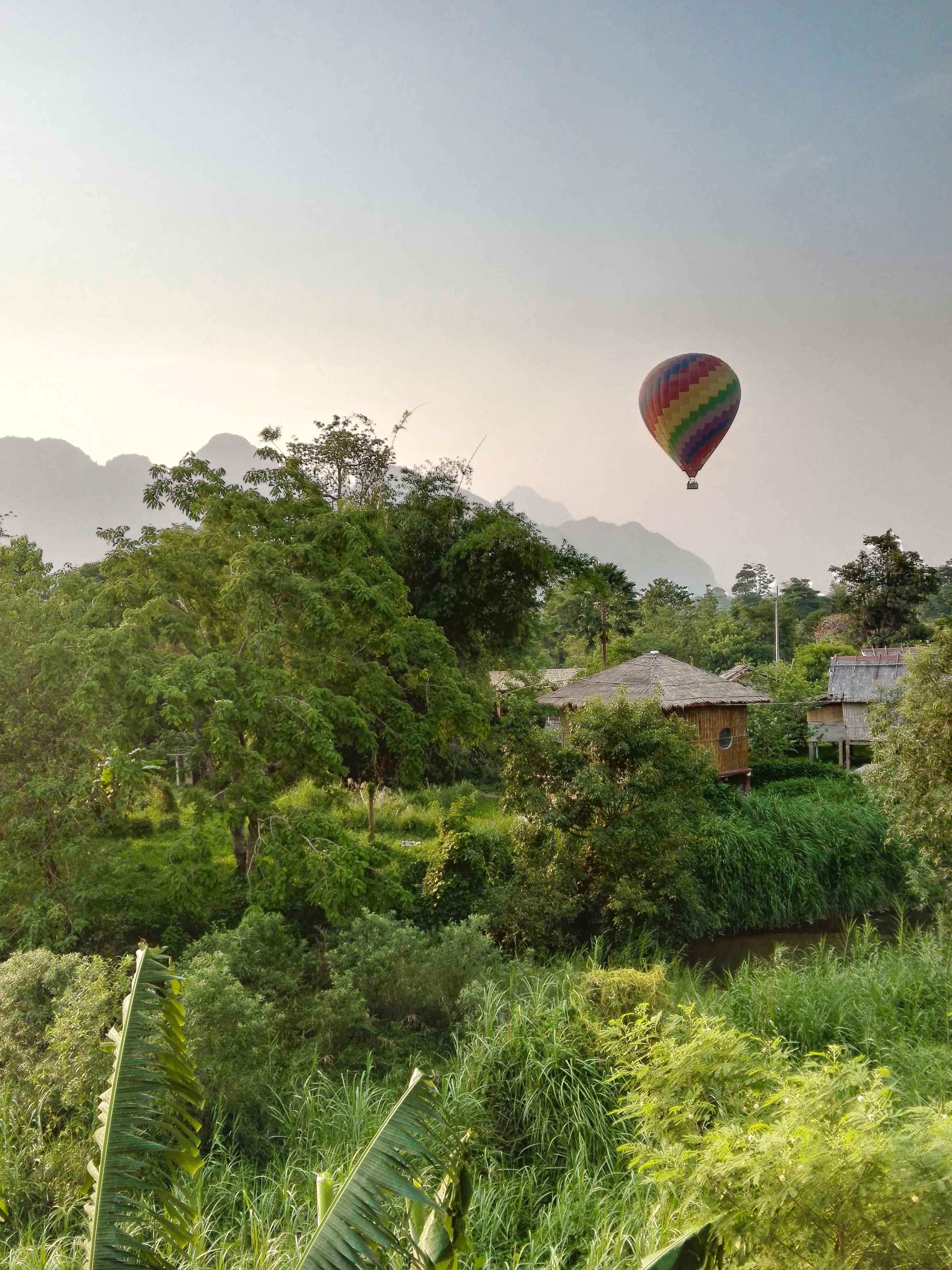
9. Dinner with Friends
Who doesn’t like to have dinner with friends? Grab something to eat at one of the many backpacker bars along Vang Vieng main street and watch reruns of the TV Show Friends—it’s always on!
10. Sakura Bar
Sakura bar is a staple in Vang Vieng nightlife and famous for its cringy slogan:”drink triple, see double, act single”. Here you’ll find loud music, plenty of cheap booze and free whiskey shots from 8:00 to 9:00 PM.
These days, things start to calm down around midnight.
Vang Vieng daily expenses (average for 1 person)
Accommodation: €3,41
Water bottle (1,5L): €0,27
Lunch: €2,57
Dinners: €3,51
Breakfast: €1,87
Bicycle rental: €1,62
Blue Lagoon: €1,08
Day tour: €11,33
If you have any questions or some info to share on Vang Vieng, leave it in the comments below.
Getting to the Kuang Si waterfalls in Luang Prabang
If you look through a Laos travel guide you’ll find the Kuang Si waterfalls coming up as “the top-rated”, “must-see”, “unmissable attraction in Luang Prabang”. Also, if you browse over some reviews on TripAdvisor, not one person seems disappointed by them.
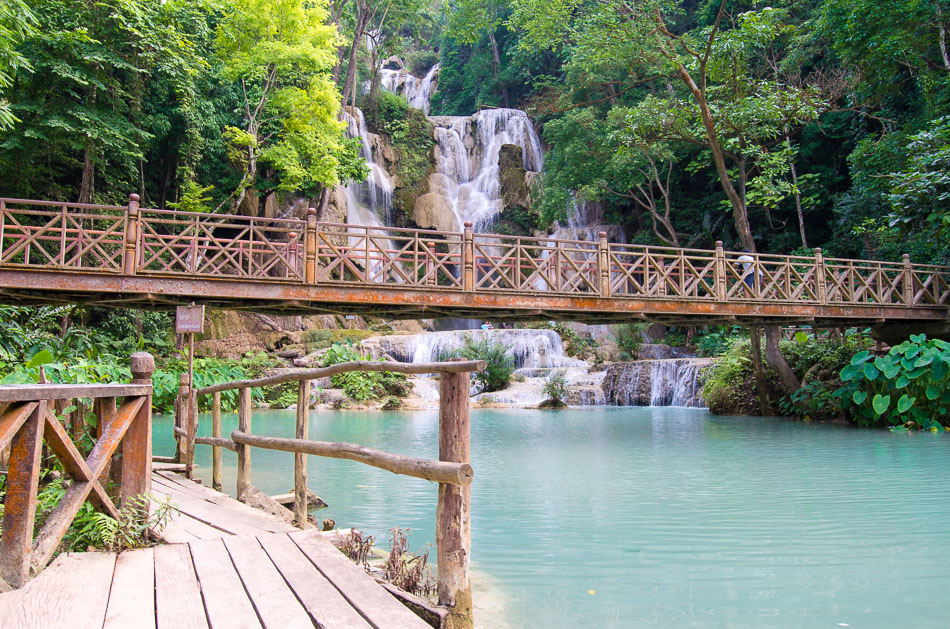

Simply put, these falls aren’t “just another waterfall”. Over the years a single large 60m cascade tumbling continuously from the jungle, carved several multi-tier pools of bright turquoise water, making the site look pretty much like the garden of Eden. The sunlight piercing through the green tropical vegetation, the wooden bridges, and even the little fishies nibbling at your feet once you get in the water feels like paradise—it’s like a Spa at the Olympus!
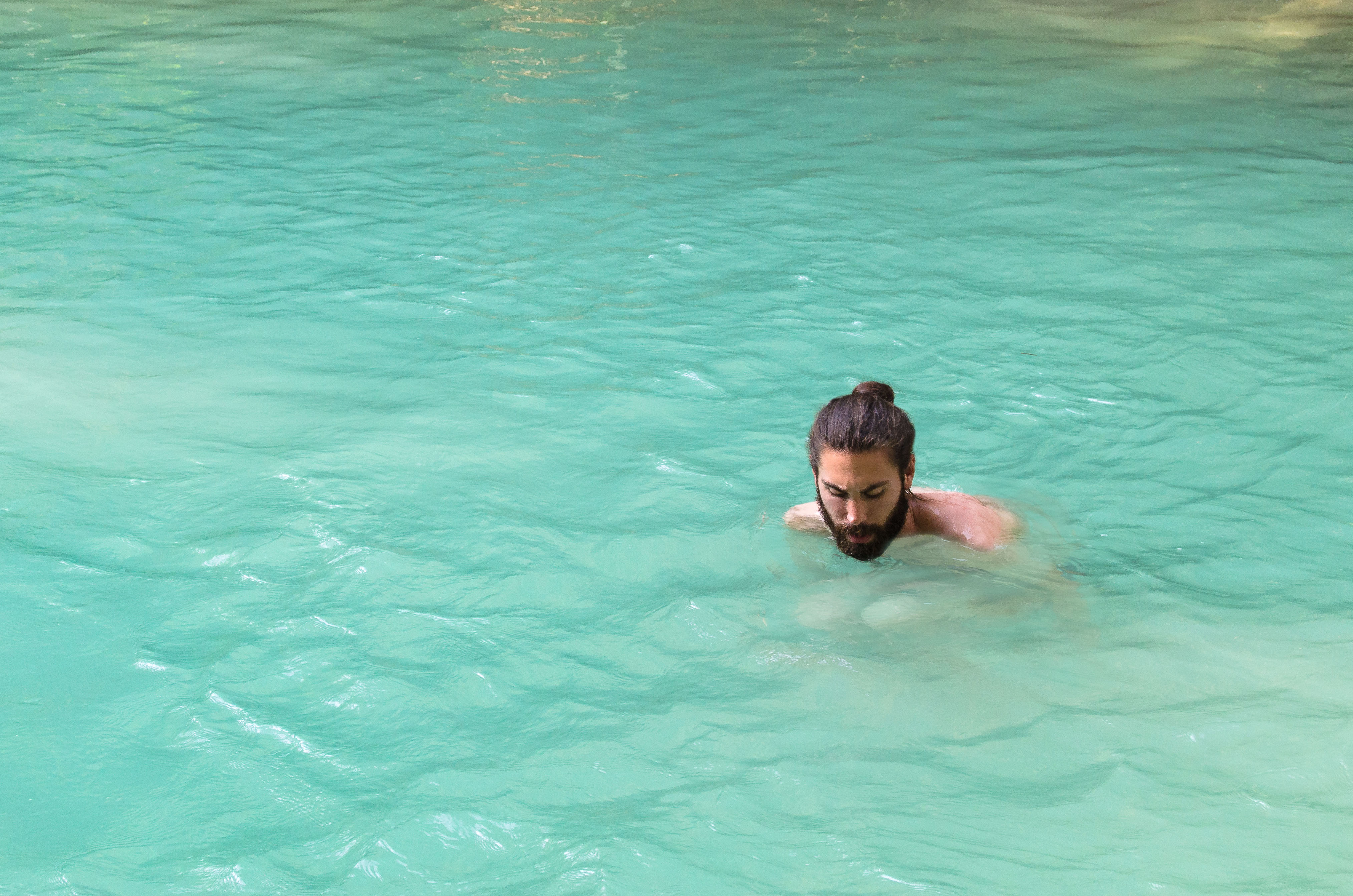
Best time to visit the waterfalls
They can be visited all year round. There’s only a downside of doing it during the rainy season: the water will be cloudy and muddy instead of blue.
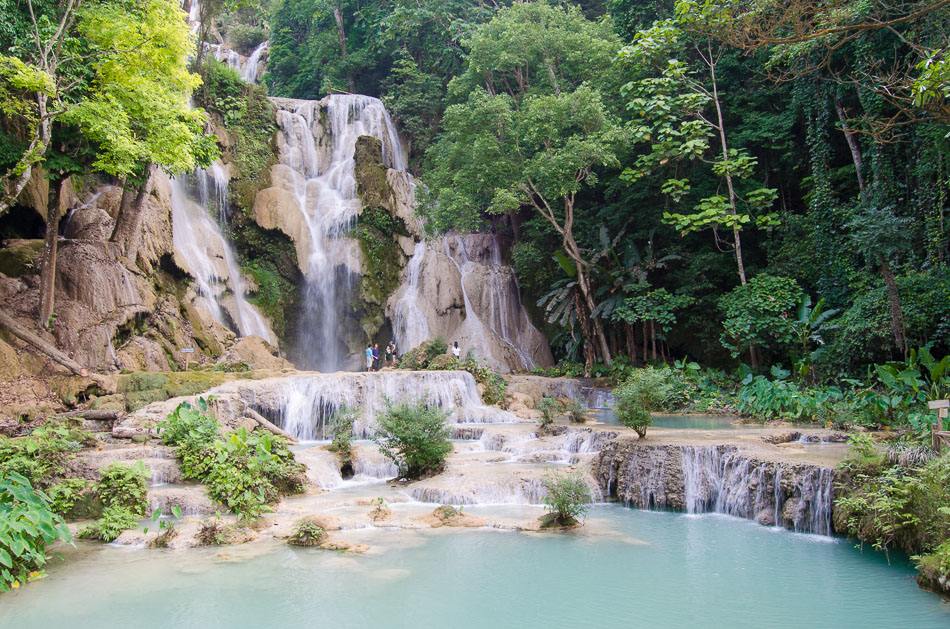

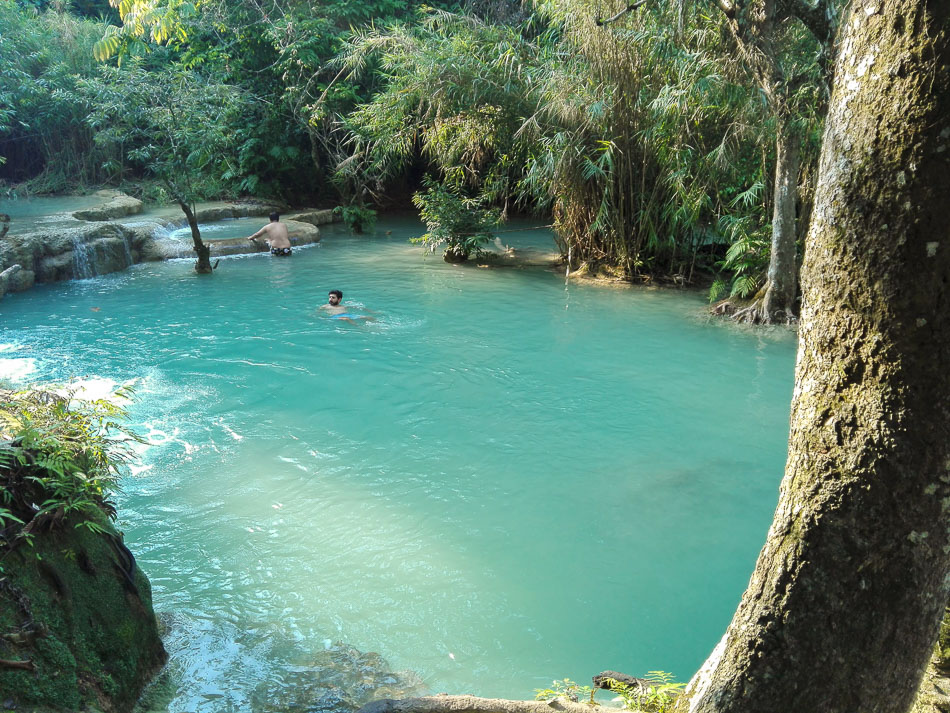
Transportation options to the Kuang Si Waterfalls
Tuk-tuk: you’ll find many tuk-tuks around town ready to get you there. By gathering a group of 3 to 4 people you can split the bill. Rides are about €22.50 for a round trip and for half a day.

Mini Bus: any travel agent on Sisavangvong Road have mini buses or minivans going to the Kuang Si Falls every day. The price are €3 per person with pick up at your hotel. Have in mind that the departure and return times are set from 11:30 AM to 2:30 PM (which is a big downside).
Motorbike: can be rented for €11, use maps.me for guidance (Google Maps doesn’t work that well in Luang Prabang).
Bicycle: rentals start at €1 a day and most hotels in Luang Prabang provide this service.
You get what you pay for
As backpackers, our mind is always set to save as much money as we can, so we chose the bicycle—it’s only 30 km anyways, it’ll be fun, we thought. We can make a cycling excursion out of it!
So there we went: two tall guys pedaling on bikes not made for adult men and with no gears (but were the only ones available in our hotel that day).
On motorized vehicles, rides take 45 minutes.
We took 4 hours.
Kuang Si Park
Entrance fee: €2.13 (20000 kips)
Opening hours: every day from 8:00 AM to 17:30 PM.
Next to the main entrance are restaurants, fruit stalls, bathrooms and small wooden huts to change clothes. As you might expect, the park is very popular among locals and tourists.
The Bear Sanctuary
At the beginning of the park is an animal sanctuary housing 25 Asiatic Black Bears rescued from the hands of poachers and traffickers. Lamentably to this day, bears keep being illegally sold to Vietnam and China for their bile—a valuable component in traditional medicine.
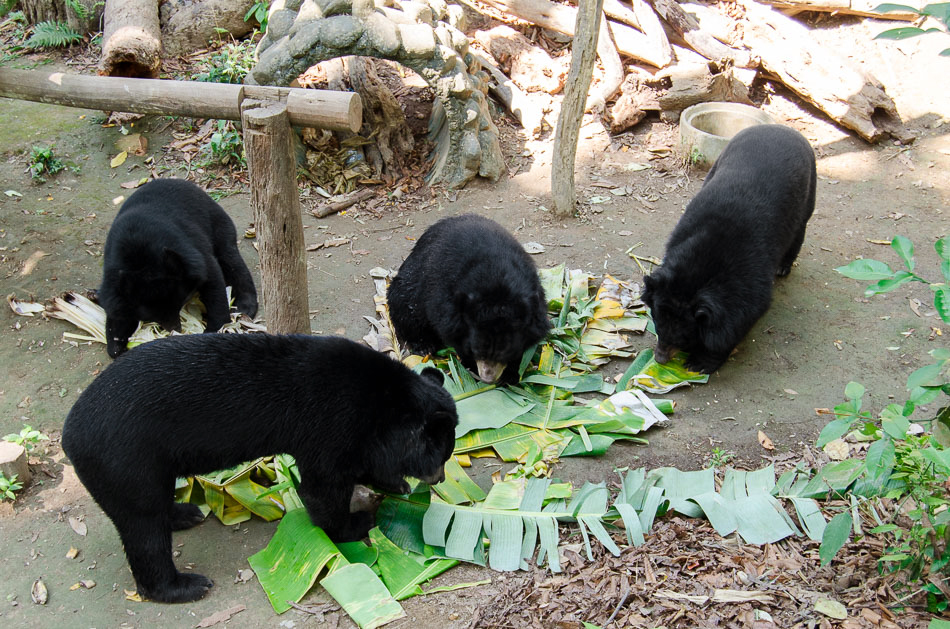
The sanctuary is run by an Australian non-profit in collaboration with the Lao authorities. Find out more about Free the Bears Fund here: www.facebook.com/freethebearsfund
The bears are adorable.
Climbing to the top of the fall
On the right side of the larger waterfall is a muddy and unkempt trail running through the middle of the forest all the way to the top of the fall. Up there everything is quieter and the dense vegetation covers the light, but the view is spectacular!


Kuang Si secret pool
Somewhere in the middle of the climb is a path to a secluded natural pool. To learn how to reach it, you can watch this video on Youtube: www.youtube.com/secret-pools-kuang-si-waterfalls
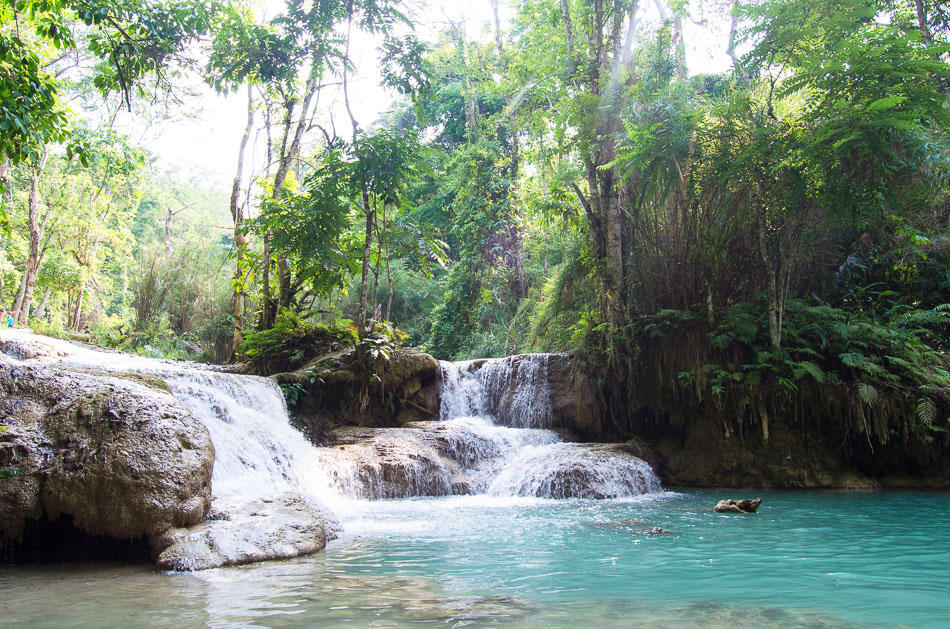
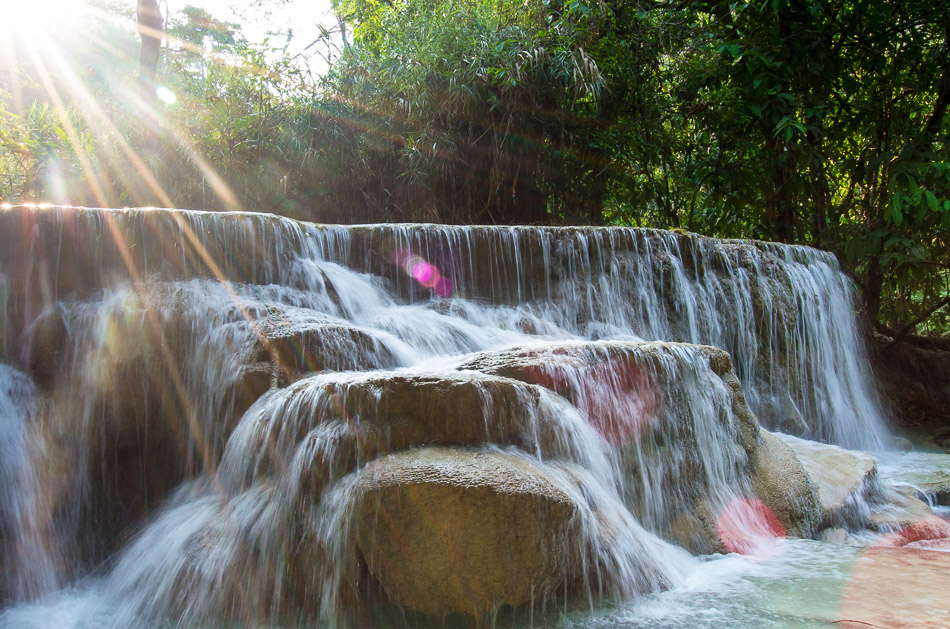
Returning to Luang Prabang
The end of the day came without us noticing. When we got on the bicycles and saw that the sun was almost gone, it hit us: HOLY. F*CK. We still have a 4-hour bike ride to Luang Prabang!
In less than an hour we were pedaling on pitch black—no streetlights whatsoever and completely alone. At one point to actually see the road, we turned the phone’s flashlights on, but the light attracted an assortment of flying bugs (beetles, grasshoppers, moths, and mosquitoes) that kept flying into our face, eyes, and mouth.
Nuno’s bike chain kept coming off forcing us to stop every 10 minutes to fix it, and every time we stopped we heard rustling coming from the bushes at the side of the road. As far as I’m concerned it could be a rat, but it could also be a fled bear from the park or a chupacabra thirsty for blood, and we were freaking out!

After god knows how many hours we arrived in Luang Prabang starving, exhausted and with a newfound love for tuk-tuks.
Are you planning on visiting the Kuang Si Falls? Will you do it by bicycle?
Have you been there already? Let us know in the comments below.
Cover photo by Shankar S.
9 tips & tricks for a smooth border crossing
Crossing a border by land is hands-down a tedious moment for everyone. Backpackers do it solely for the love of the game, and as a means to cut expenses of a tight budget. When it comes down to the more money I get to save, the more traveling I get to do, we just gotta suck it up and do it.
But after several unfortunate occurrences (like this one, and this one), border crossing also became synonymous of anxiety and sweaty palms. In all conscience, being on the other side of the world dealing with corrupt armed men planning to steal your money, would make you feel quite apprehensive as well.
On the other hand, you can see land border crossing as the rite-of-passage that turns a common tourist into the intrepid backpacker all of us strive to be.
All jokes aside, corruption from police and border officials underlines a real social problem that we’ll explain in a minute. But first, here are the top tips (in no particular order) for crossing a border by land:
1. Appearance
I’m all up for comfortable clothes, but entering a new country is an occasion that asks for something with sleeves, so dress appropriately. Let’s just say that the goal is: to not give the officials a reason to ask for a proof of adequate funds.
2. Lie on your resume
On the subject of “adequate funds”, it may be convenient to have a job – so lie if you have to. Naturally, most countries prefer welcoming tourists on vacation than unemployed backpackers who’ll try to find illegal work on a tourist visa.
At the borders, some occupations are more taboo than others, so diving instructor, musician or bartender should be replaced by engineer, dentist or accountant. Young looking travelers can dodge the question altogether by saying they’re students.
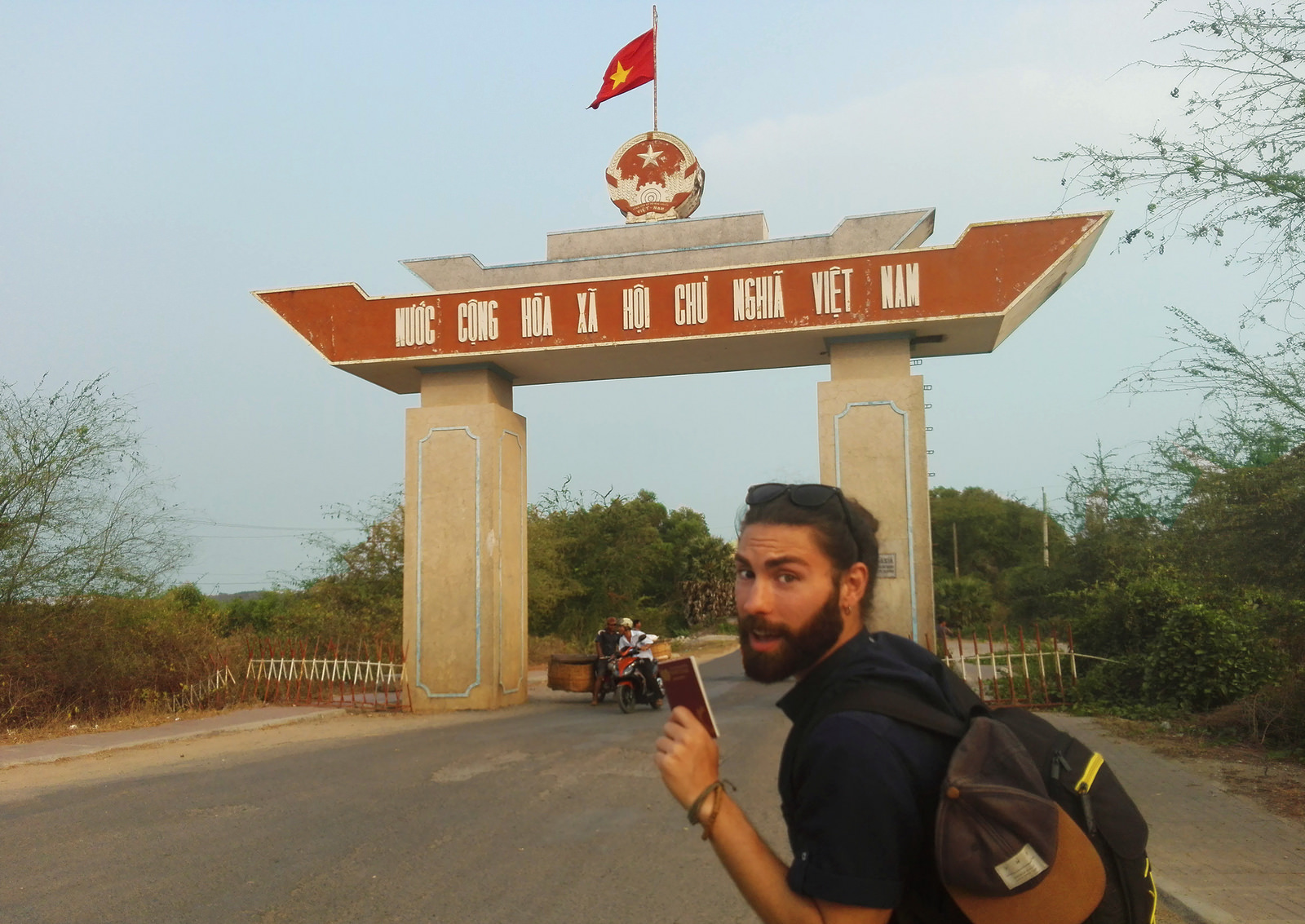
If an officer asks why you’re visiting, allegate that you’re on holiday and avoid any excuse to be tangled up in further bureaucracy.
3. Exact cash and crisp bills
Even though Lonely Planet includes scams as a common border crossing expense, don’t give in just yet! Check up on the visa costs beforehand and carry the exact amount in the appropriate currency (usually US dollars or the country’s currency).
As a preventative measure, hide some emergency cash in case you bump into a more “assertive” guard. Also, don’t expect them to accept your crinkly-old-faded bills!
Tip: You’ll find plenty of money exchange services in the periphery—some more legitimate than others—avoid them, the rates are always unfavorable.
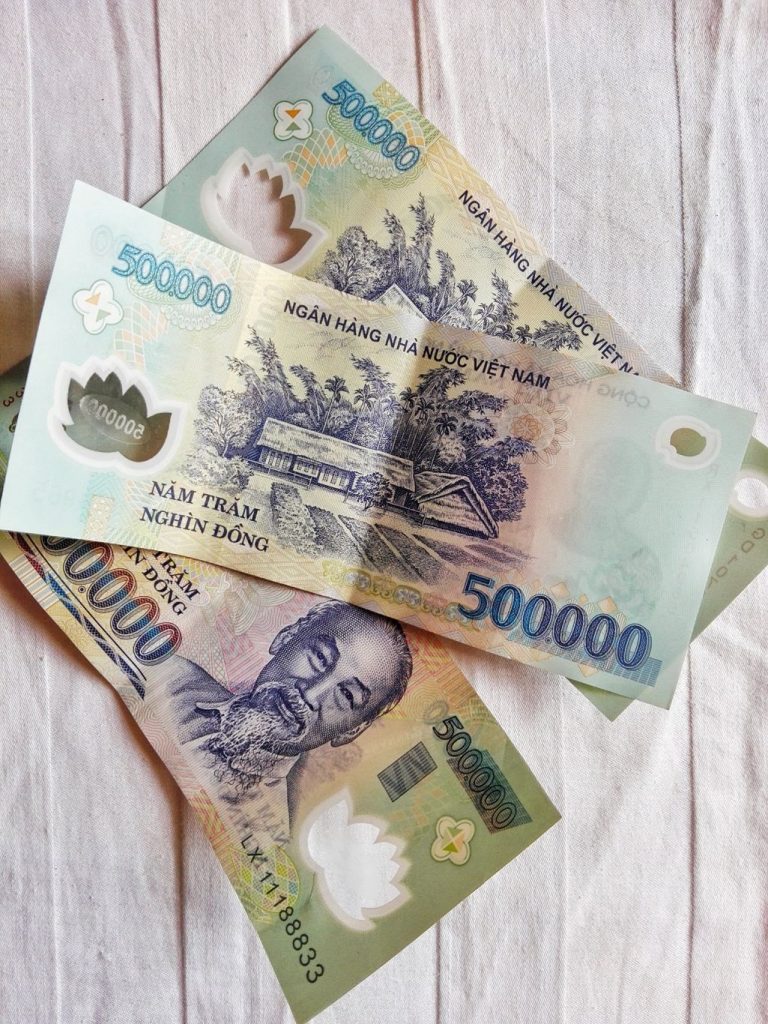
4. Research the border crossing checkpoint
Do a fast Google search on the land border you’re about to cross and become acquainted with what you might expect, such as location and visa procedures (not all checkpoints provide visas on arrival to foreigners). Maps.me and travel blogs can help you with that.
Some border checkpoints are more isolated or sketchy than others, that’s why being prepared, walking in confidently and understanding the country’s processes can make the experience run smoother.
5. Transportation to and from the border
Bus companies in Southeast Asia will arrange and assist you in the whole border crossing process front point A to point B. However, this is not the norm around the globe.
Border forms and officials will ask for your destination inside the country, so have an answer ready.
Tip: there will be plenty of transport options at customs (tuk-tuk, taxi, shuttle buses), but negotiating transportation from the border will always be more expensive.
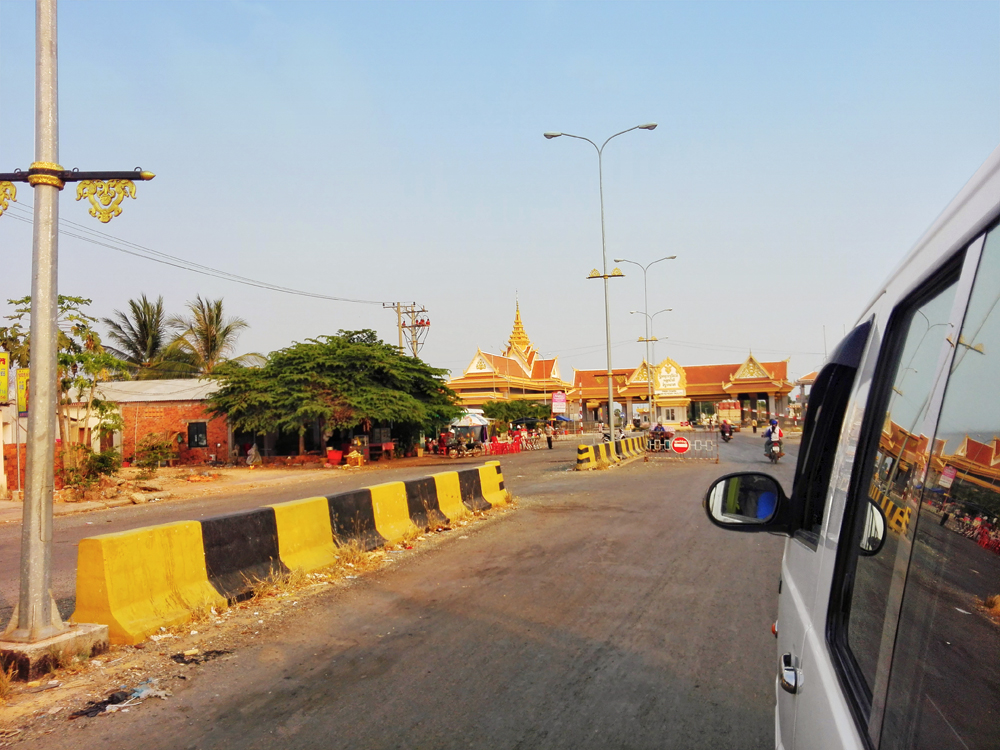
6. Updated Visa information
Double-check in advance the exact visa requirements to your nationality—you might need to apply for the visa and it takes time.
Have in mind that foreigner policies keep changing, and is up to us to keep informed. As an example: in Thai land borders, as from 2017, tourist visa renewals are limited to twice per calendar year— despite airport borders not being affected by this measure.
Tips: your passport should be valid for at least six months.
If you’re going to be traveling through several countries, you need to be informed about where the embassies are.
Carry up-to-date vaccination booklets.
7. How long are you staying for
Trust us, always ask for the maximum limit of time in the country—you might regret if you don’t. If a country exceeds your expectations, or in case of an emergency (like ignoring point 6) you’ll be able to stay for a while longer.
8. Staying safe
If you’re on a bus ride to the border, make some acquaintances so you won’t have to cross it alone. Try to join other fellow travelers during the crossing.
Keep an eye on your belongings, be cooperative and civil to the officers as many of them have useful safety advice to share.
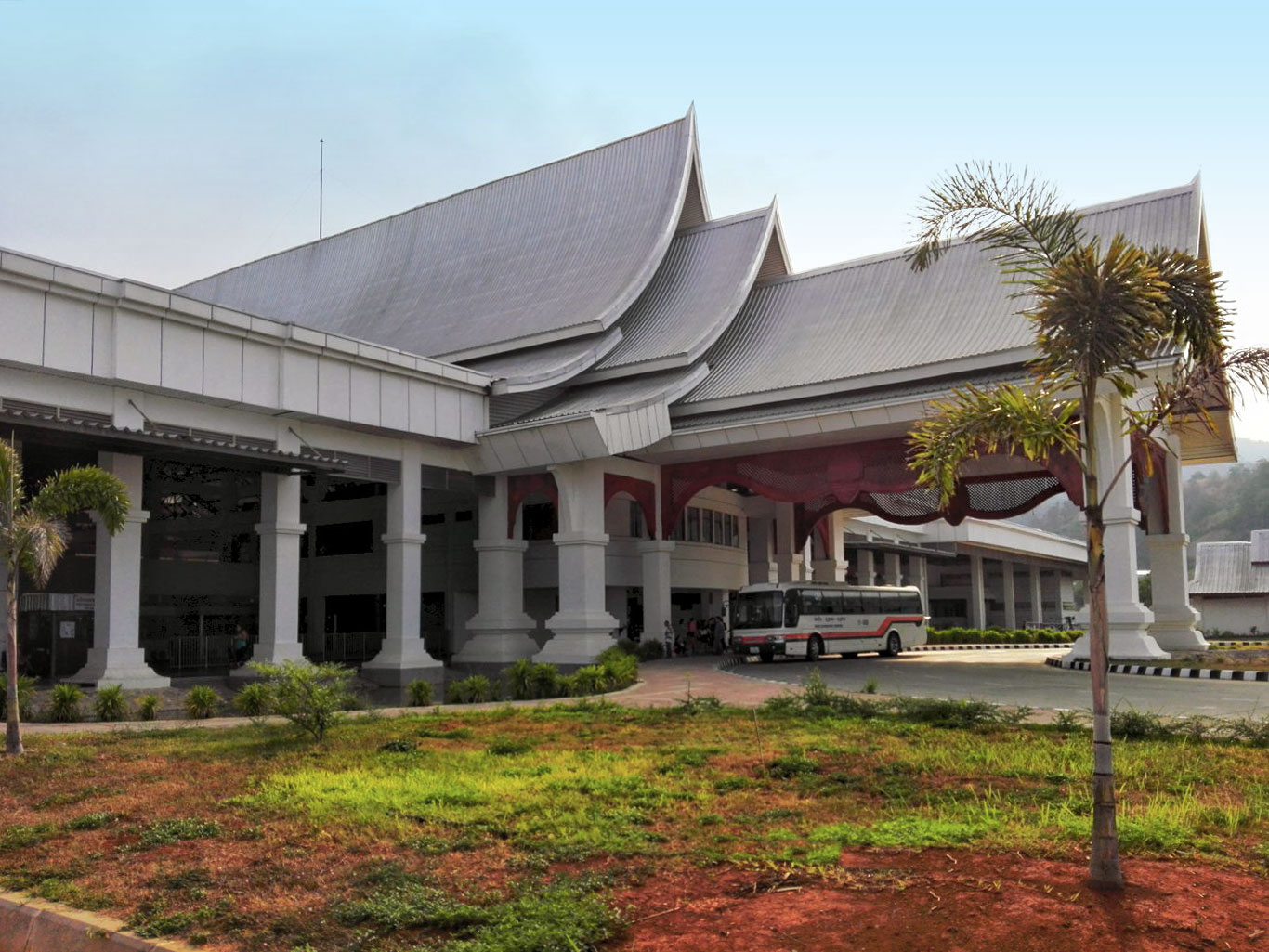
9. Just beat it
Get away from the border as quickly as possible. Get back your stamped passport, thank the officials, and leave quietly before they regret letting you in. Bye Felicia!
Tip: take a picture of your visa and save it on your phone. In case of something happening to your passport, you’ll have somewhat of a proof of your legal entrance in the country.
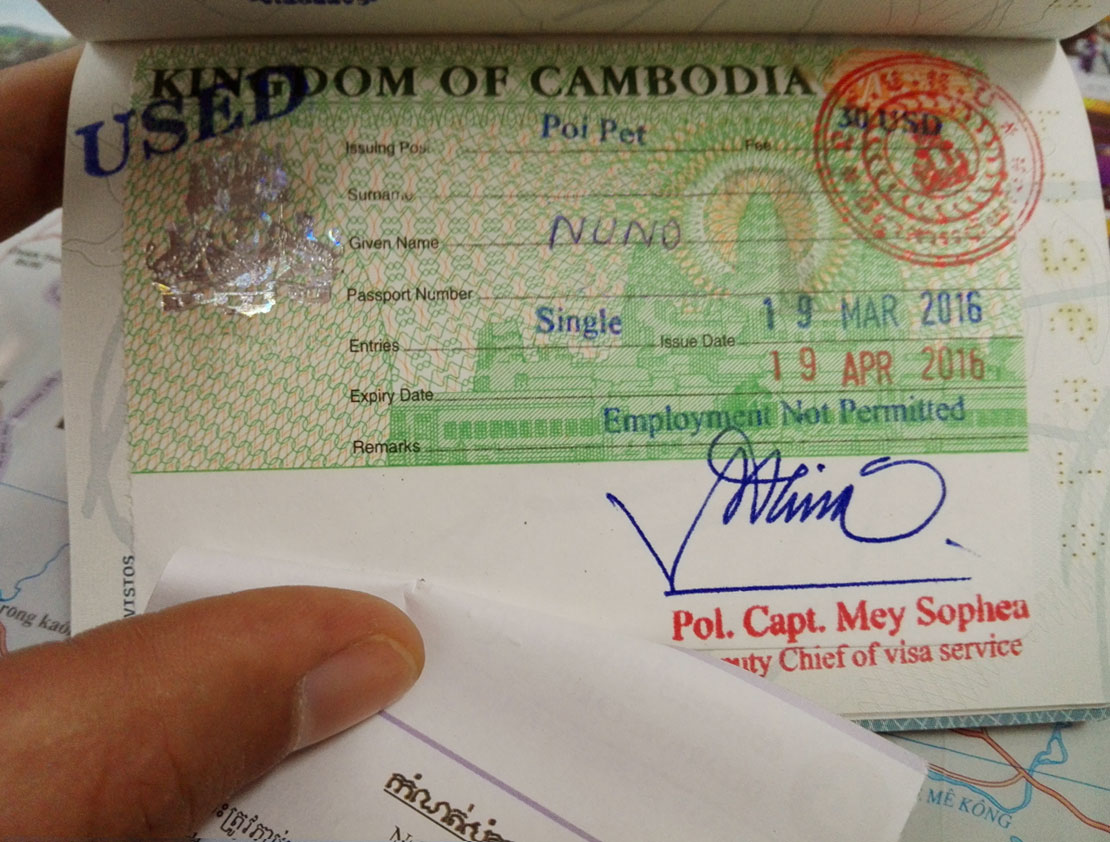
The cause of border corruption
Most of us are unaware of the personal and professional circumstances surrounding police officers and border guards in many Southeast Asian countries. Did you know that they have to buy their position for sums of money that can reach up to $25.000?
And every time they apply for a new position, they’ll have to pay the fee associated with it.
To put that insane amount of money together, officials have to borrow it from their families and friends, to which they’ll have to pay back. And it gets worse when you consider the economic reality of countries like Cambodia, where a big part of the population lives on merely $2 a day.
Although nothing justifies the scamming and the stealing, it may help us understand the context in which they operate and their conduct as a way to comply with a rotten system.
If you have extra tips or similar experiences share them in the comments below. Thanks!
Cover image by Rikker Dockum.
Returning Home after a long trip. Now what?
I remember getting all anxious and fidgety when the time to come back home got closer, I wanted to keep going at any cost. I recall thinking that a last minute visit to Malaysia was an opportunity that shouldn’t be wasted. After all, we were close by and the chance to visit it might not happen again. Besides, one of the biggest international airports in South East Asia is in Kuala Lumpur anyways. It’s perfect! We can catch a plane home from there.
As convenient as it may sound, I know that it was all to make the experience last for a few more days. I would’ve done anything to postpone the end.

Welcome home!
When we arrived, it wasn’t comforting to find things just as they were before, it was weird and surreal. I remember a heavy feeling of guilt in my stomach for not wanting to be back, and the fake smiles I had to force. An overwhelming sense of disconnection when I tried to rekindle friendships, as I found friends more interested in smartphone screens than our stories.
It’s funny how during our 5 months trip, I said frequently to Nuno:
– When we go back, we mustn’t become two of those travel bores that talk about traveling all the time.
Fortunately, that never happened. Sadly, because nobody cared about our trip.
It has been a difficult transition, not going to lie. People don’t seem to understand what our travel experiences meant for us: a time when we were truly happy and free.
But I get it, we were the ones that choose to leave for half a year, while they stayed here with “real responsibilities”.
However, it’s undeniable that our friends seem to be on different trails of life now: as we want to save money for our next trip/ they want to spend it on a new car. We want freedom/ they want to settle down. While we talk about dreams and aspirations/ they keep complaining about bills and work. It’s like we’re tuned to different frequencies nowadays
So, can traveling be transformational?
Some people say traveling can change you. Personally, I don’t believe so.
The only thing traveling long-term shifted in me was my perspective (and maybe my priorities). I believe it’s not about changing as it is about growing: I’m not a different person now that I’ve returned home, I’m actually more of the person that I was before I left.
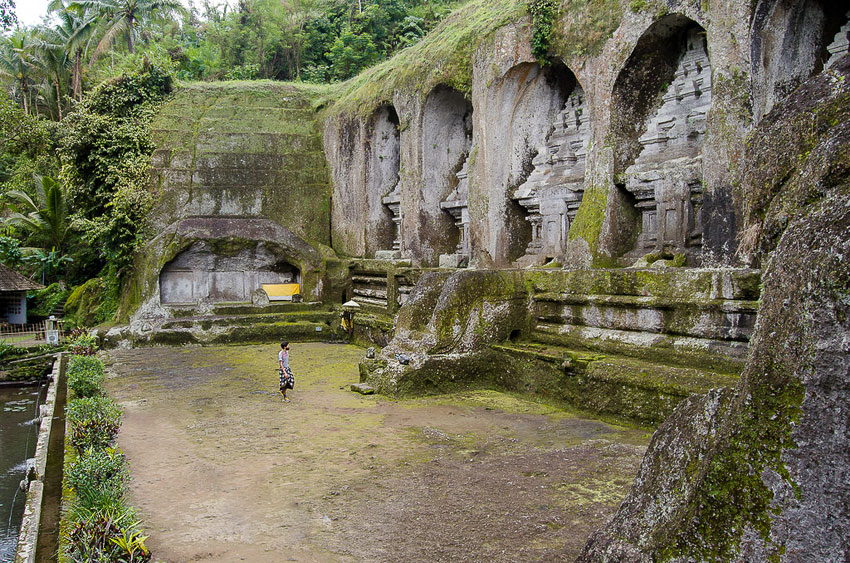
Back to “reality”
Now that I’m back again, I find myself pressured to fit the mold, delay my happiness and follow the socioeconomic guide that says: ” Focus on career. Be successful. Make money”. The trouble is that I don’t see myself as a career man, and nothing annoys me more than the concept of success ̶ that empty, generic New Year’s Resolution that we’re all expected to strive for.
And I’m not avoiding responsibilities, working is necessary of course, but I won’t choose a career in detriment of a life well spent. My set of ambitions don’t pass through a solid résumé, or a good retirement plan because I don’t want to save all my money for retirement, but enjoy it along the way there.
Besides, if I have the privilege to pick what to do with my life, why would I choose to spend my most physically able years locked in an office? Plus, I firmly believe that when we like our craft we can do some version of it in any part of the world, so why be geographically restricted?
One thing is for sure: we can always make more money but we can’t make more time.
What now?
Traveling was a super rewarding experience that I wouldn’t trade for anything, and I know in my heart that I will travel again. In the meantime, I must prevent this happy-expanded version of myself from shrinking, so it’s fundamental that I handle my emotions in the best possible way.
Keeping the spirits up!
So what if, instead of looking at my return as the end of a chapter in my life, I saw it as a blank slate? What if I made it a mission to figure out what really matters to me now, and start building my life around it? What positive personality traits that came out during our travels can we translate to our daily lives?
Check out the action plan that has been helping Nuno and me through this gloomy period of adaptation:
10 Ways to Keep the Travel Spirit Alive
Are you back from a trip and your life is feeling a bit stale? How have you been feeling and coping with your return? Share your thoughts, leave us a reply down here.
Must-see guide to Hue
Hue was made the capital of Vietnam in 1802 during the feudal dynasties that ruled the country. Nowadays, hundreds of historical relic sites remain in the city and are well worth our visit.
It was a very hot and rainy day when we got there, so we spent a big part of it in a cafe by the river waiting for a thunder storm to pass. There was a distinctive earthy scent from the rainfall and the view was stunning: a bridge over Perfume river with the Imperial City as the background.
For a Vietnamese standard, Hue can be considered somewhat of a “calmer city”.
For quite a few times we found ourselves walking and eating alone ̶ something that never happened around Hanoi, Saigon or Hoi An.
We stayed at the Ngoc Binh hotel not far from the Imperial City (approximately a 25 minute walk from the main entrance). Our room had a private bathroom, tv and included breakfast. Also, for one more dollar you could have AC in the room.
If you’re interested, check the hotel here.
The Imperial City
The Citadel opening hours are 8:00 to 17:30. For a proper visit, you’ll need at least 4 hours.
The entrance fee was 6.05€ for each of us.
You’ll find two different prices: one for locals and other for foreign tourists. Locals pay less of course. However, it was the first time we saw this price distinction at a Vietnamese monument ̶ at least in a noticeable way.
As we slowly walked through the central entrance in the Ngo Mon Gate to shelter ourselves from the rain that showed up that morning, our heads turned towards a young couple speaking in Portuguese.
– Bom dia!
There’s where we met Adriana and Diogo with whom we spent the rest of the visit.
The Citadel was made a UNESCO site in 1993, and is going through gradual reconstruction and restoration, as many of the buildings were destroyed by bombings from the war against the French (1947), the Americans (1968) and some typhoons.
Built in the 19th century, the complex was divided into 6 areas:
• Palaces compound,
• The forbidden purple city,
• Temple compounds,
• Residences,
• Internal affairs compound,
• The Royal gardens
There are countless walls and gates separating the different areas.
To see a digital reconstruction of the Imperial City in its prime, check the video:
We started the visit by the regal and colorful Thai Hoa Palace where major royal receptions and ceremonies were held. Here’s where you’ll find most tourists hanging out, but also a ton of information on the history and architecture of the citadel.
For the real touristy-tourists, you can dress in kitschy imperial clothes, sit on a throne and get your picture taken.
After walking outside for a while, we reached the Royal Theater. The building was reconstructed and now houses cultural performances like opera and royal dances, as well as a permanent exhibition with traditional theater costumes, masks and instruments.
Even though we didn’t watch any show at the theater, we were lucky enough to listen to a live performance on the Hall of Mandarins, by a group of musicians playing traditional instruments.
The only way out
By now it was lunchtime and inside the complex, we couldn’t find anything to eat besides snacks. Oddly enough, we were told that if we wanted to eat at a restaurant outside the imperial city, we had to buy a new ticket to get in.
Adriana and Diogo suggested to try our luck with one of the guards at a secondary gate:
–He might let us out for lunch and re-enter without having to buy a new ticket…
Reluctantly the guard said yes, but not before snapping a picture of all of us with his phone (just to make sure he wouldn’t confuse us with other western people trying to get in). After all, all of us westerns look the same… 😀
Getting back in
In the afternoon we visited the ruins of the Forbidden Purple City and the Emperor’s Reading room. The Forbidden Purple City is like a citadel within a citadel, where only the Emperor, his family, his concubines, and eunuchs lived.
The entire complex is enormous and well-gardened for the most part. The restored buildings encompassed by ponds, trees, and singing birds create a calm environment where you can walk calmly for hours ̶ and forget the intense fighting that happened there just a few decades ago.
Ceramic and glass dragons are a constant decorative element throughout the architecture, as they are symbols of the monarchy.
The temple complex of To Mieu and the 9 dynastic urns, a tribute and worshiping place to the emperors of past dynasties:
It’s funny how in almost every Southeast Asian country you might leave your shoes behind at the entrance of an empty monument, but when you get out, you find this:
Portuguese synchronism
At the end of the visit, we had to say goodbye to our Portuguese friends Adriana and Diogo.
Coincidently, on our way back to the hotel, we got in a tiny French bakery for an afternoon snack and met a Portuguese girl named Ana. The conversation flowed for hours. Living in Hue for a year and a half, she’d never met other Portuguese people in the city.
Moving on
With so much of Vietnam still to see and our Visa expiration date getting closer, we had to move on from Hue to our next destination: Hanoi.
As a former capital of Vietnam, Hue has much more to offer besides the Imperial City. If you can hang around for a bit more time, these are the other places worth your visit:
• A bicycle ride through the countryside
• Tu Duc Tomb (Entrance fee 3.30€ / closed for lunch: 11:30 to 13:30)
• Hue Temple of Literature
• Thien Mu Pagoda (free entrance)
• The tomb of King Minh Mang (Entrance fee 3.30€)
• The tomb of King Khai Dinh (Entrance fee 3,30€)
• Dong Ba Market (Messy and authentic, with great street food. Be prepared to bargain!)
• Hue Festival of Culture and Arts (Held every 2 years, the next one will be in 2018)
Hue daily expenses (average for 1 person)
Imperial City entrance ticket: 6,05€
Coffee: 0.62€
1.5L Water bottle: 0.30€
Lunch: 2.28€
Dinner: 3.05€
Accommodation: 4,02€
Bus Hoi An > Hue: 3,91€
If you have any questions or some extra info to share, please leave it in the comments below. Thank you!
Travel Apps we use and love
We live in a technologic world, smartphones are everywhere and you’re probably reading this post on one. There are more than 100.000 travel apps to make your life easier while you’re on the road, you don’t need to carry around a map that folds out to be the size of a beach towel anymore.
We will be talking about the best travel apps, the ones we use and recommend. Most of them can be used offline because, let’s get real: if you get lost in the middle of a rice paddy in Indonesia, chances are you’re not going to find any Wi-Fi hotspots.
Daily Expenses
Nuno already used this app daily and was quite pleased with it, so we now use it to keep a record and control our day to day expenses on the road. It’s intuitive and allows you to organize your earnings and expenses. It can show the information divided by time, days, months or category of expense in text and in graphic form.
It’s available in several languages and currencies and let you schedule ahead money movements like wages or payments. It’s like having all your financial records in your pocket.
There’s a free and a paid version (2,5€) and it’s only available for Android:
Google play – Daily Expenses
XE
We use this app several times a day, usually before we buy something to know how much it costs in euros. It’s a currency conversion app with ten different currencies on an initial panel (chosen by you). It’s fast, super easy to use and it really comes in handy when you’re negotiating prices. It always gives you the latest Exchange rates but unfortunately, all vendors will have their own rate and that’s the one they’ll use.
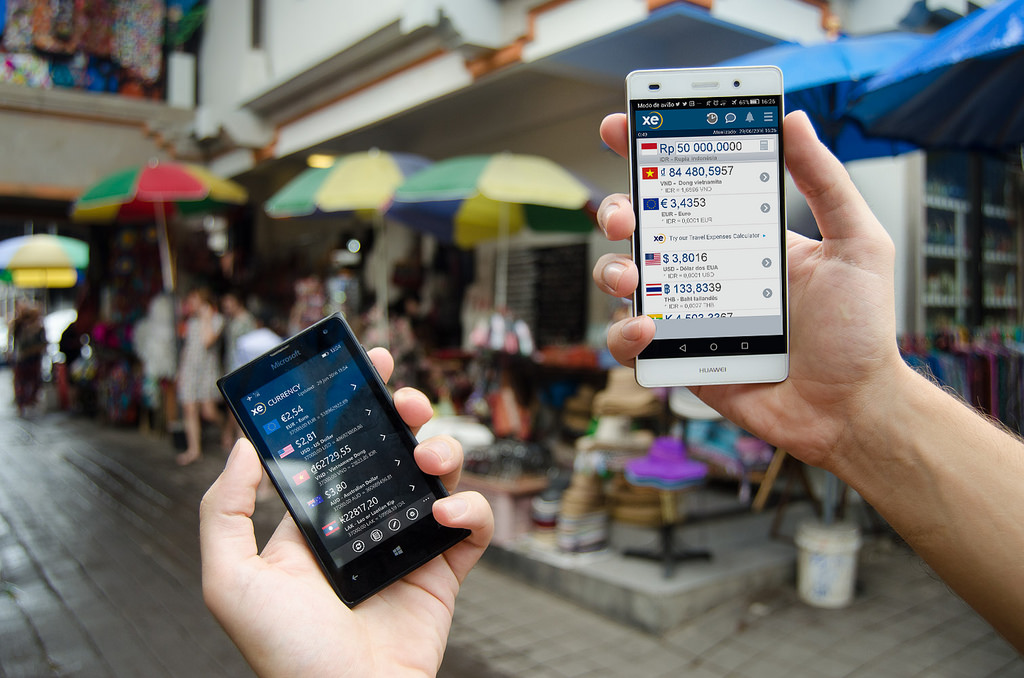
We use the free version for Android and Windows phone. The Android version is way more user-friendly:
Google Play – XE
Windows Store – XE
Maps.me
We heard about this one on the road and immediately surrendered to it.
When connected to the internet you can download the map of the country you’re visiting to your phone, getting there just turn the GPS signal (no internet needed anymore) and get globe-trotting!
It’s a free app with an open map that works on the same premise as Wikipedia: you can add more places and information as you go along and upload them for others to use. It’s possible to pinpoint restaurants, gas stations, viewpoints, hospitals, hotels and so on.
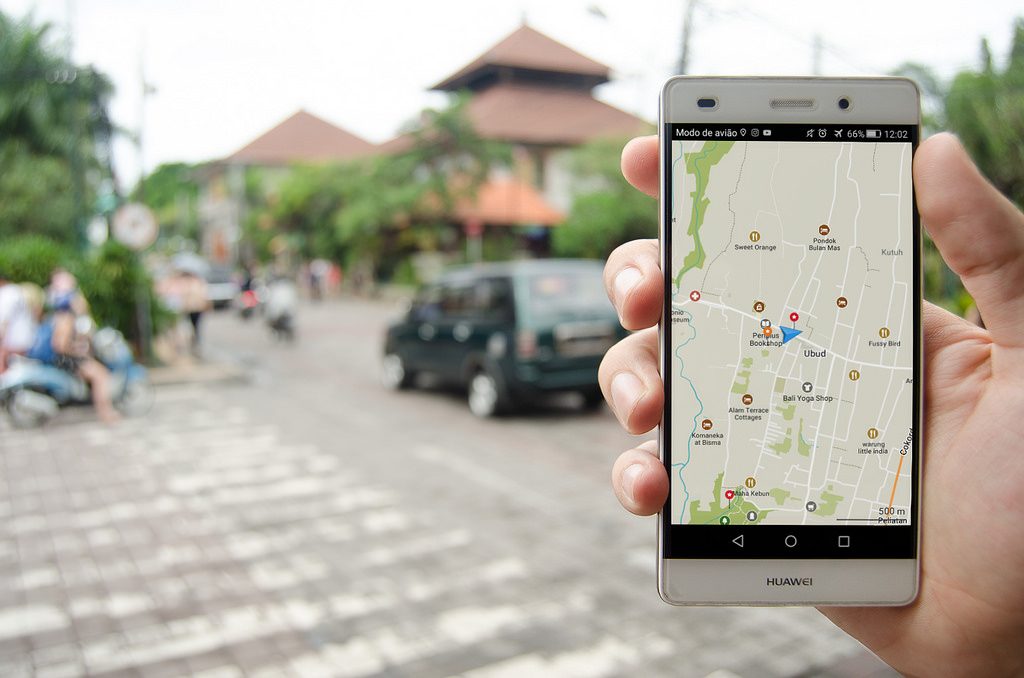
Maps.me is available on Google Play and iOS but not available for Windows phone yet.
On a personal note, it would be cool if users could save places as favorites in their accounts.
Google Play – Maps.me
App Store – Maps.me
Snapseed
Travelling comes with taking pictures especially if you have an Instagram account like we do *Insert plug here: Instagram*. Most of our photos go through Snapseed. It’s very simple and intuitive and lets you touch up the brightness, shadows and saturation, crop photos and applying filters among other useful stuff. That being said, if you have photo retouching OCD it won’t be enough, you’ll still need Photoshop.
It’s available for Android and iOS, but not for Windows phone:
Google Play – Snapseed
App Store – Snapseed
Agoda
All of us travelers want to book cheap accommodation and we want it fast!
The Agoda app gives you access to discounts that you won’t find on the website. Quite cool when you have a limited budget, just be sure to always add the 10% tax to the final price. Look for the Mobile Deals or Insider Tips, they’re usually worth it!
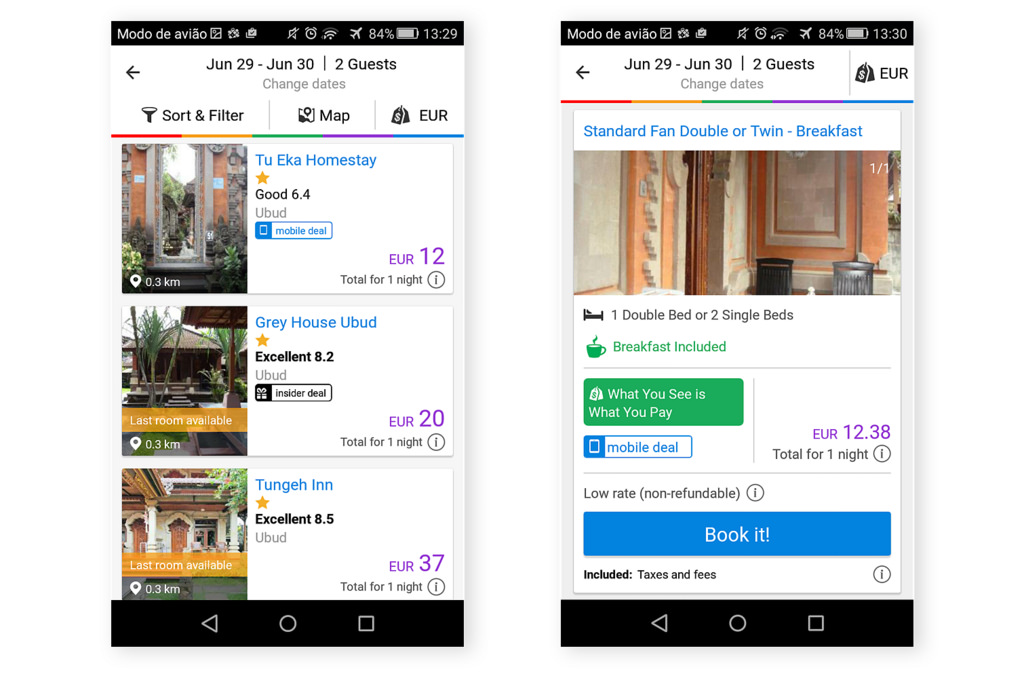
Available for all smartphones:
Google Play – Agoda
Windows Store – Agoda
App Store – Agoda
Booking
A hotel booking app similar to Agoda.
You can manage and cancel your reservations here. There are advantages to be registered and logged in: the app and the website will show you some “secret deals” that sometimes can reach 50% off, so do yourself a favor and spend 3 minutes registering. It’s worth it.
Available for the all operating systems:
Google Play – Booking
Windows Store – Booking
App Store – Booking
AirAsia
If you’re traveling through Southeast Asia and need to catch a plane, there’s no way around it, sooner or later you’re going to fly on AirAsia.
The Airline app still has a buggy search engine, but it’s still useful for check-ins and to access special discounts.
Available for Android, iOS and Windows Phone:
Google Play – AirAsia
Windows Store – AirAsia
App Store – AirAsia
Google Translator
Handy when you get to a restaurant with no English menu and you’re really hungry. Especially if you have some dietary restrictions and are trying to avoid eating dog, or frog. It happened. Nuno ordered frog thinking it was chicken. Chicken of the pond!
Download the app and the dictionary on the language you’ll need and save yourself some trouble. Plus, you can actually learn something while using it! Frog = Con êch.
Available for Android and iOS:
Google Play – Google Translator
App Store – Google Translator
Evernote
It’s a convenient and versatile app for you to write notes as soon as they pop into your head. You can save them in the form of text, voice recording, photography, and drawing. They’re stored in an online account which you can access anytime with your PC, phone or tablet. We’ve been using this app to write down what often appears written in this blog.
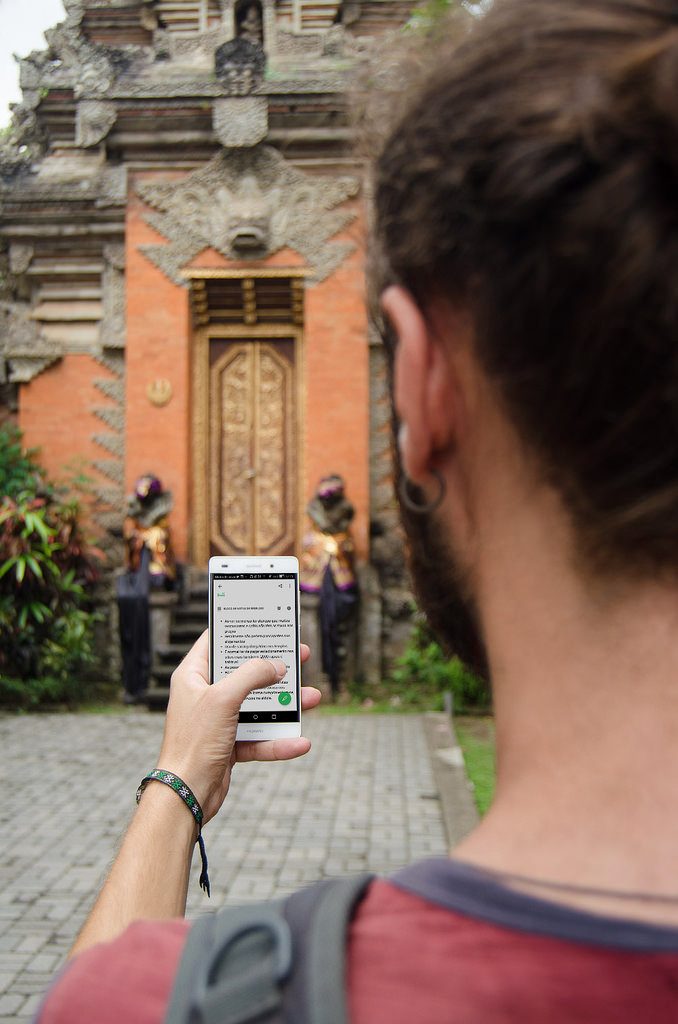
It’s available for Android, iOS and Windows Phone.
Sometimes when you’re offline, older notes are not accessible.
Google Play – Evernote
Windows Store – Evernote
App Store – Evernote
Can you imagine spending 14 hours straight on a bus with absolutely nothing to do?
Yeah, it’s not cute and there are only so many trees you can look at before starting twitching and going slowly insane.
If you like to read, this app allows you to save web pages that can be later accessed when you’re offline.
Available for Android, iOS and Windows Phone.
Google Play – Pocket
App Store – Pocket
YouTube
The YouTube app allows to download videos to your phone so you can watch them later offline.
Quite cool! It can help you break the dullness of a long ass road trip.
Available for Android, iOS and Windows Phone.
Google Play – Youtube
Windows Phone – Youtube
App Store – Youtube
As you can see smartphones are here to help, they can become your best travel buddy especially if you’re traveling alone. Digital tools can make you pack lighter, avoid some of the logistic hassles of being on the road and entertain you. So gear up your phone with the travel apps that suit you and get to steppin’!
The first month of traveling
So one month has passed and we’re currently in Vietnam writing our first thoughts about a whole month of travel.
We’ve been able to visit a bunch of different cities and countries which means: being constantly stimulated by everything those new places have to offer. Plus, the daunting notion of everything we planned to do in this trip, keeps burning in the back of our minds.
Long-term traveling requires a different mindset than the one we’re used to.
Unintentionally, we got caught in a rhythm like we were trying to fit everything on a 10-day vacation. Every day was filled 100% with as many activities as possible and all that was doing was stealing our presence and making us neglect our bodies. Not to mention that it was completely unfair to the places we were visiting. We needed to slow down.
Let us illustrate what might happen if you don’t slow down:
When you’re feeling physically exhausted but decide to keep going anyways for two more hours before having a rest, is when that new local market you’re in seems like every other you’ve seen so far.
When you decide to cram every Angkor temple in the same day even though there’s like 40ºC in the sun and you’re doing it by bicycle, is when you get ‘templed out’, dehydrated and over it.
When you decide to check those 20 iconic sites before breakfast, the fun experience of trying a new dish at that quirky local restaurant with not an English word in the menu is replaced by a BigMac at the first McDonalds you find “because you’re starting to feel woozy from the low blood sugar”.
When you’re drained, that characteristic street from Asia filled with thousands of motorbikes, honking cars, and busy locals will just annoy you and make you want to run to your hotel room. And when you get there, the irrelevant slow Wi-Fi connection can make you GO BONKERS!
The most obvious piece of advice you’ll ever hear
It’s important to know your body and your limits to begin with. No matter what part of the world you are, you’ll still need plenty of water, good food, and rest. BOOM. You’re welcome.
On another note
This whole experience has been quite positive and quite doable.
Crossing borders, new people, the amazing sunsets and white sand beaches, the swollen lips from too much chili, the days that blend together and feel like a giant Saturday, the unmeasurable freedom
We’re learning to relax more and enjoy each place we’re in. We’ve started to slow down, creating time to appreciate where we are and to be grateful for the privilege to be there.
The time we have in our hands actually allows for less structured days and the outcome is openness. Openness to change plans and make new ones as we go. To appreciate little things like the vibrancy of the flowers, the sweetness of the fruit and the smiles of locals passing by. Not only the breathtaking postcard-worthy scenery. It even grants the distance to look at the lives we have back home. Perspective.
We’re waking up feeling less tired and more inspired.
Long-term traveling is good and we definitely want more of it.
The sad smiles of Bangkok
After an eleven hour trip, we arrived at Bangkok’s Suvarnabhumi International Airport at 7:30 am and a scalding breeze welcomed us as we left the plane.
Nuno was afraid that they wouldn’t let us pass through the immigration port because we didn’t have a return flight. The process ended up being quite simple, some minutes in the queue, a smile from us, a photo and two stamps from them.
We were officially in Thailand! Kob khun krap!
Hopped on a train to the city center for 45THB in a 25min ride. The train is above ground which allowed us to see the city from afar. First the neighborhoods with terraced houses, separated by greens lakes, waterways and banana trees. Here and there the golden roofs of temples peaked from between the trees. As the city got closer, the train got fuller with quiet locals absorbed by their cell phones and sniffing on Vapex inhalers.
We left the train at the last stop (Phaya Thai) and started to feel the real city: traffic noises, new smells, thousands of locals in every direction and the unforgivable heat. We barely started walking and we were already sweating profusely. We got to Bangkok on a flight from Stockholm, so we were still wearing semi-winter clothes.
After some minutes walking, we entered the first building that seemed to have air-con. It was a mall filled with teenagers and a nice food court, an opportunity to freshen up and grab something to eat. We ate Tom Yum Noodle Soup.
With a full stomach, the journey to the hostel started. It was quite an adventure under the scalding sun.
We walked and walked, turning and rolling the map* on itself, asking the locals for help, but getting back a smile and Thai gibberish that didn’t help at all. Every kilometer made the bags feel heavier.
*You can get the city map on the airport at the Tourism Authority of Thailand for free.
As soon as we found the right street a Thai guy approached us asking where we came from, how many days we’ll spend in Bangkok, and to where we were heading. He told us that being a Friday, some monuments were totally free and the tuk-tuks with the yellow license plates were cheaper and would gladly take us there.
He also insisted a hundred times that we should go see the Big Standing Buddha.
We just want to get to our hostel man. Not now.
So here’s the deal: if you go to Bangkok you will get approached by tuk-tuks non-stop.
And if not by tuk-tuks, by guys working on commission for them, or for a store that makes money selling overpriced crap to tourist. Be prepared.
To them, anything works as an icebreaker:
– Hey ma’ friend. Where are you from?
– When did you arrived in Thailand?
– Nice beard. How long did it take to get it like that?
– Where are you going?
– When are you leaving Thailand?
– I’m a University teacher and I’m not trying to sell you anything, but…
– Need help ma’friend?
Days later a tuk-tuk guy, after we refused his ride, actually lied to us saying the temple we were considering visiting was closed that day. After insisting on trying anyways, he sent us in the wrong direction, following us until we got completely lost, trying then to make the sell. Not cool man, not cool.
And the funny part was that in the end, he just wanted to take us to the Big Standing Buddha.
All of this persecution will make you feel like a Big Dumb Standing Tourist.
Bangkok is a worn down, full of life, hectic city.
A reflection of that is the famous Kao San Road, a place for the ones who like to party. Neon lights, hundreds of tourists, street shops, vodka buckets and loud music from the bars constantly competing with each other.
Parallel to Kao San is the mellow and bohemian Rambuttri Road. Good music, plenty of street food, fruit sellers, cool restaurants, nice bars, lighted trees, and plenty of Thai massage spots. It’s a great place to have dinner and spend your evening.
Definitely worth a visit.
Thailand is renowned for it’s cheap and delicious street food. It’s everywhere at any time of day. You can have a delicious pad thai from 50 to 80 THB.
There are plenty of iced sliced fruit to eat for 20 THB. Sweet mango, papaya, dragon fruit, watermelon and pineapples, all peeled off and sliced, laying in huge amounts of crushed ice.
You should also try the egg and banana pancakes, the coconut water, and all the fruit juices at hand.
You’ll also feel the need to drink insane amounts of water. We went to Thailand in March and the heat was intense! Fortunately, water was everywhere, you can buy them at any 7 Eleven scattered all over Bangkok. A big water is only 13THB, the same price we buy them in Portugal, plus, you can buy them cold. It’s also a good excuse to break your 500 or 1000THB bills.
Talking about money, there are ATM machines available everywhere, so no need to worry. But they’ll all charge you a 200THB fee for every withdrawal. To that, don’t forget to add your own bank’s fee.
I believe we’ve all heard about the famous Thai sympathy. Locals do have a constant gentle smile on their faces, especially to foreigners, but they’re also quite reserved. This narrowed our interactions to vendors and merchants, and according to our experience, they’ll drop the smile as soon as you drop the money.
Maybe you’ll get a robotic ‘Bye’ at the end.
But maybe that’s just in Bangkok.
By the way, we ended up finding the Big Standing Buddha by ourselves.
Couldn’t understand what was the fuss all about.
Bangkok travel expenses (daily average for 1 person)
Meals: 1,96€
Water: 0,27€
Hotel: 5,50€ (Private double room)
Subway from Suvarnabhumi Airport to city center: 1,00€
Tuk-tuk to Chatuchak market: 2,60€
Site’s entrance fees: 6,39€
If you have any questions or some extra info everybody can benefit from, please leave it down in the comments! We’d love to hear from you.
The winning Backpack
The main item for any backpacker is a proper backpack.
Also essential, is the realization that you’ll need to travel with the least amount of things possible. Fewer things mean less weight on your back, more mobility and comfort. As two practical guys, we decided that one big backpack will be enough for the both of us.
The process of choosing the ideal backpack started by analyzing the needs and challenges we could encounter while traveling.
Requirements for the perfect backpack:
• Easy access to the whole interior;
• Flight cover or removable straps for an easy airport check-in;
• A capacity of 70 to 80 liters;
• A small detachable daypack;
• Easily adjustable straps considering it will be carried by two different people;
• Comfortable padded shoulder straps;
• Rain cover;
• Approximate cost: €150
The Brands
We headed to Google and started the search.
The main brands are, Haglöfs, Deuter, Eagle Creek, Osprey, Patagonia, Monte Campo, Rei, Kelty, Jansport, Lowe Alpine, Tangoworld, Mammut, Karrimor, Caribee and The North Face.
Nuno was responsible for listing them all. He spent several days looking for backpacks and as a conscious consumer, arranging all the information on Excel (yeah, he’s that kind of guy).
The three finalists were: *Drum rolls*
• Vango Freedom 60+20,
• Deuter Traveler 60+10,
• Osprey Farpoint 55 (40+15).
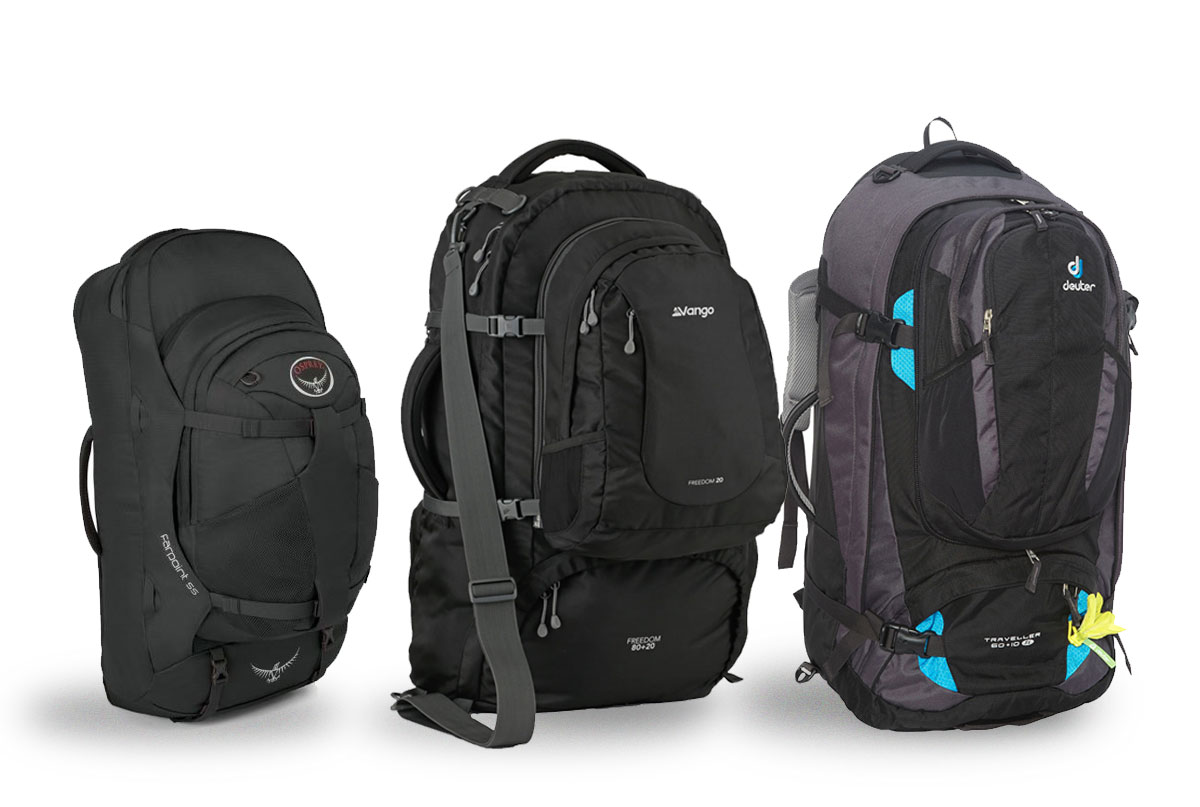
The winner backpack
We decided to buy the Vango Freedom 60+20.
The only downside to this backpack was that the rain cover wasn’t included, so we had to buy it separately for an extra €15.
The purchase
Vango has an online store but they don’t ship to Portugal.
Luckily we found the website Noite de Campo http://www.noitedecampo.com that sold Vango backpacks in Portugal, but the model we wanted. We contacted the store anyways and asked if they could get the Vango Freedom, and they actually did! A month later the backpack arrived with no delivery charge.
The backpack ended up as a birthday gift to Nuno from all of his friends.
Check the video for more details
If you have any questions about the Vango Freedom 60+20, please leave it in the comments below. Thanks for stopping by!
